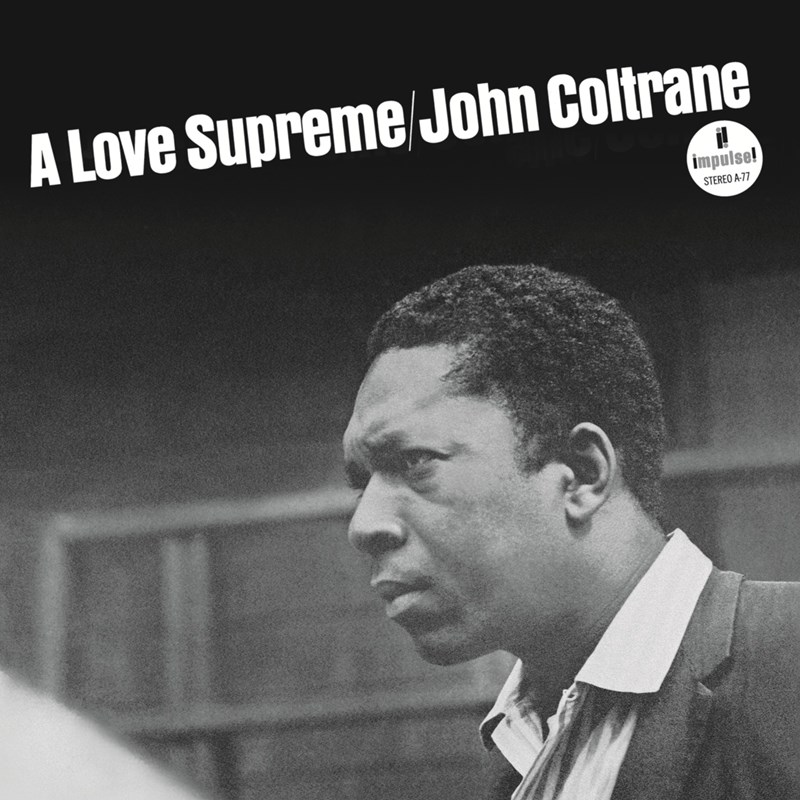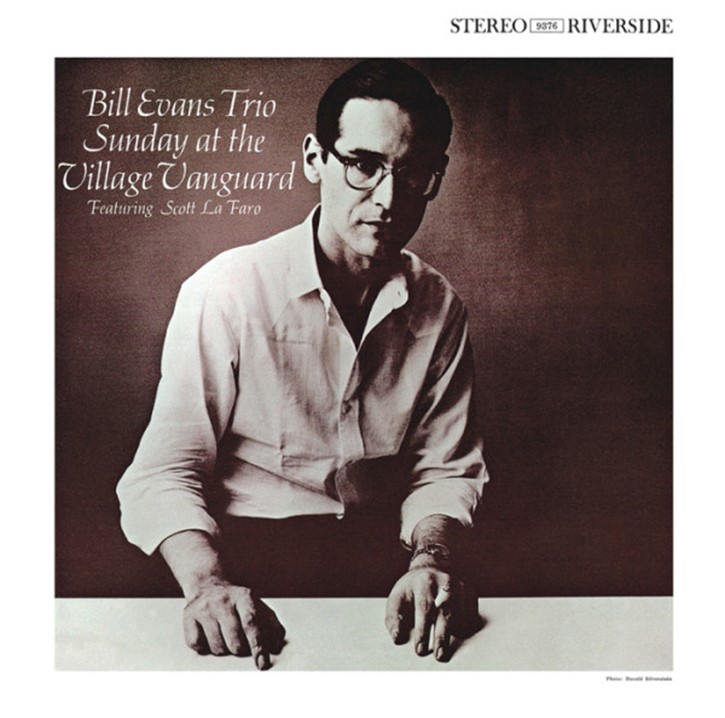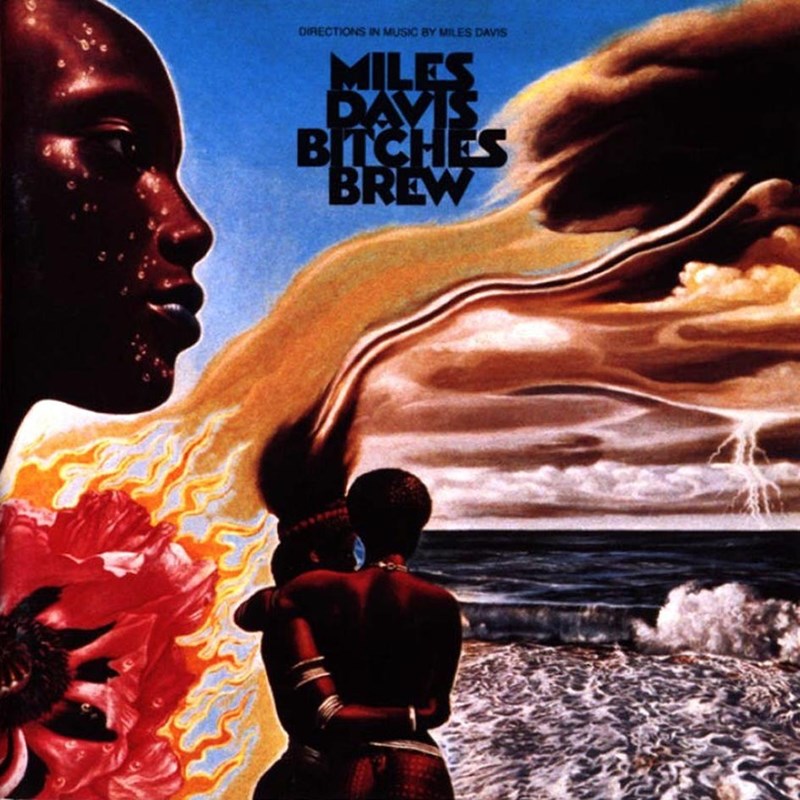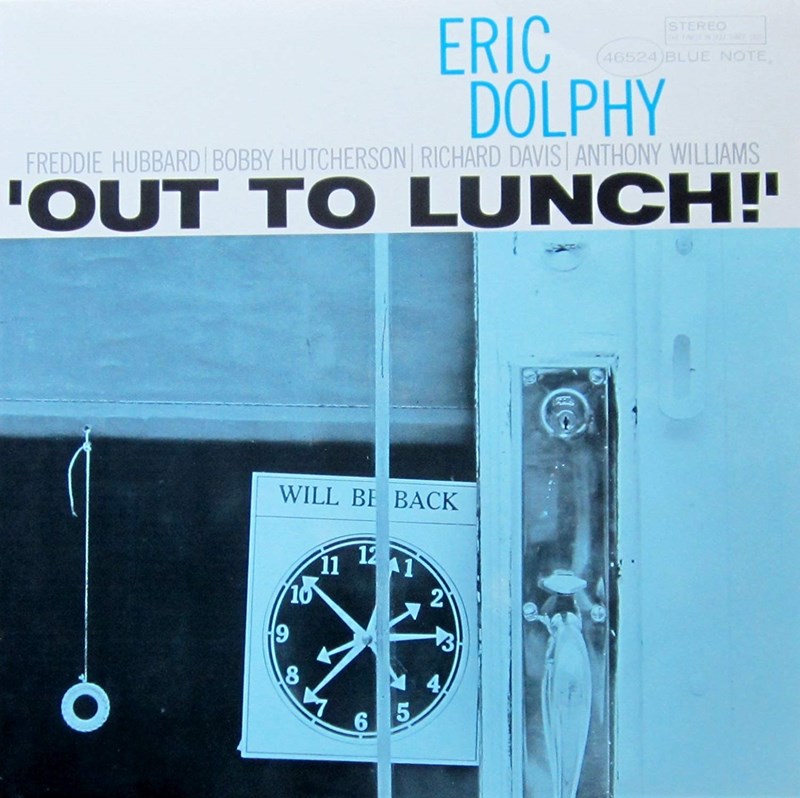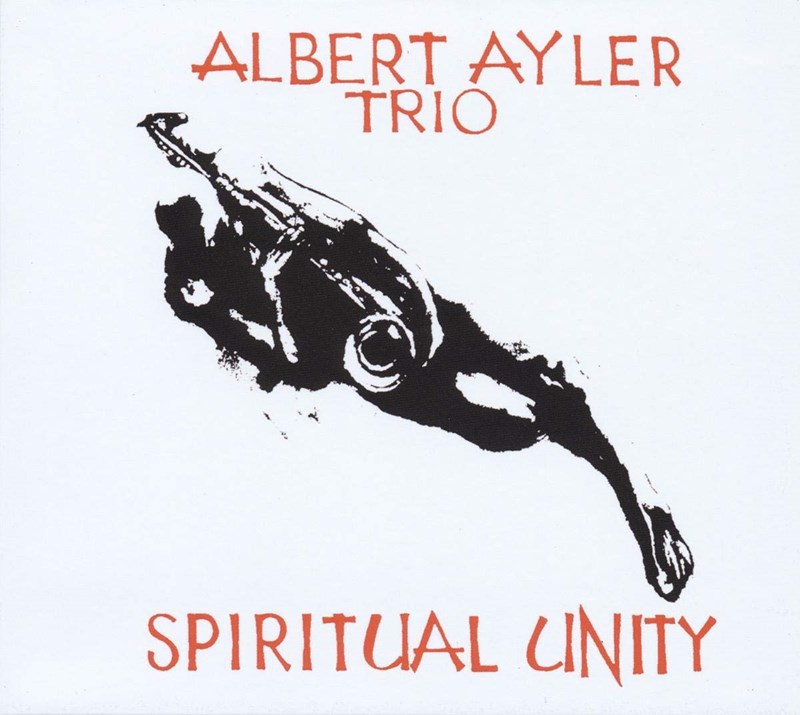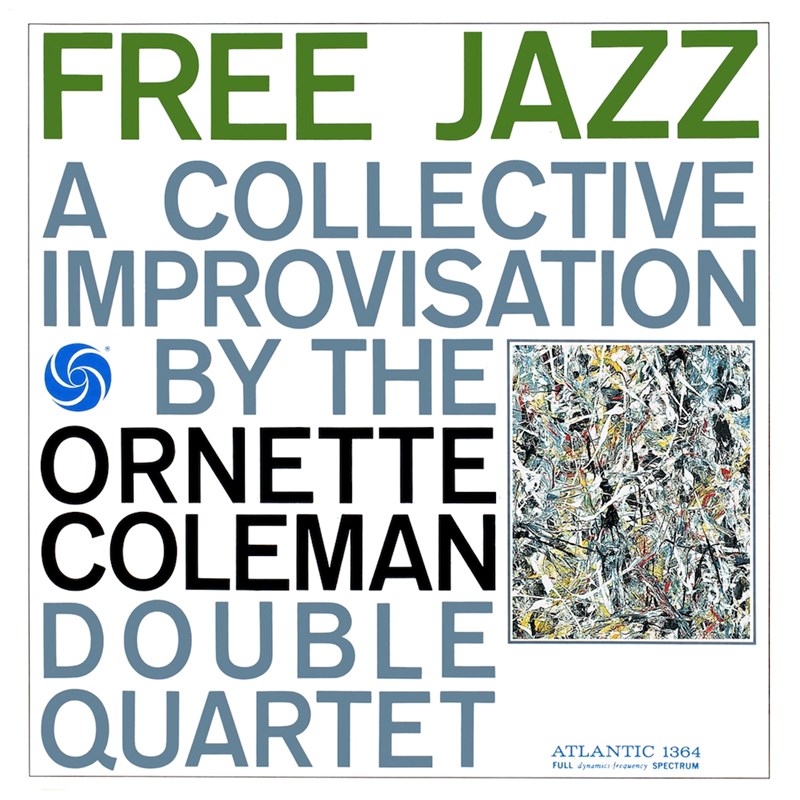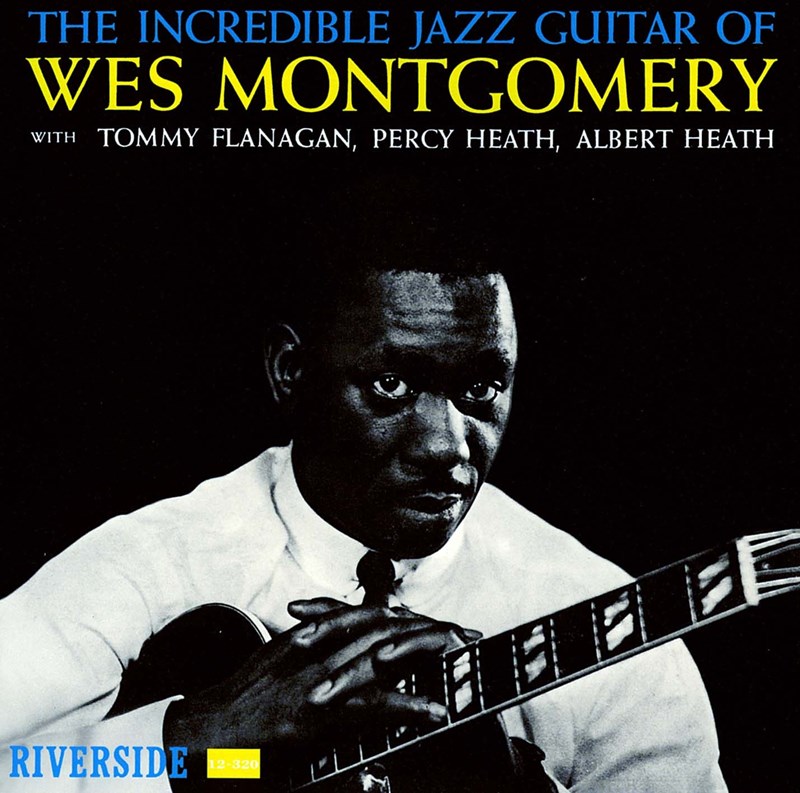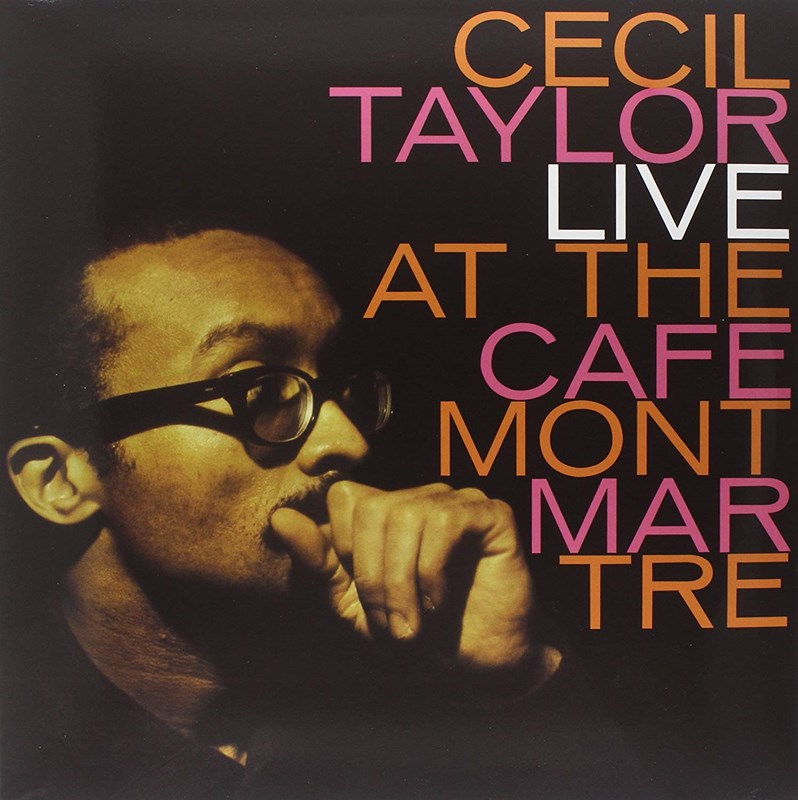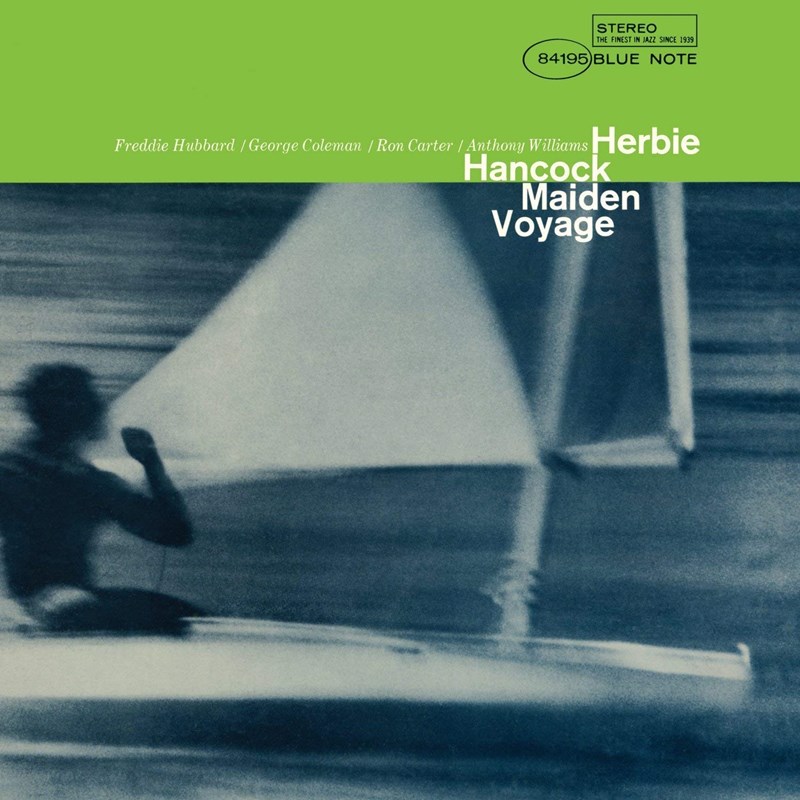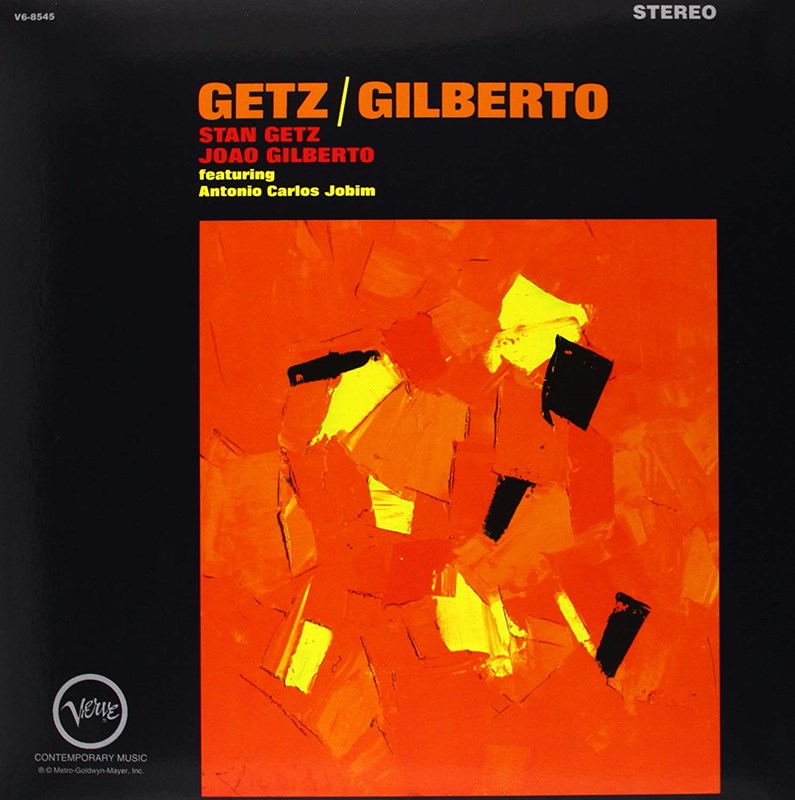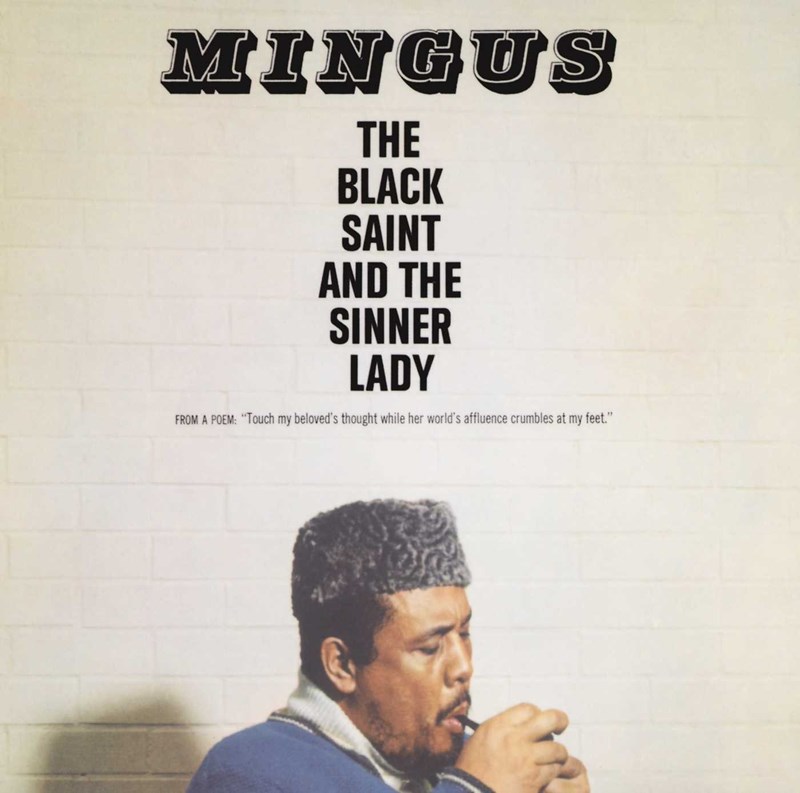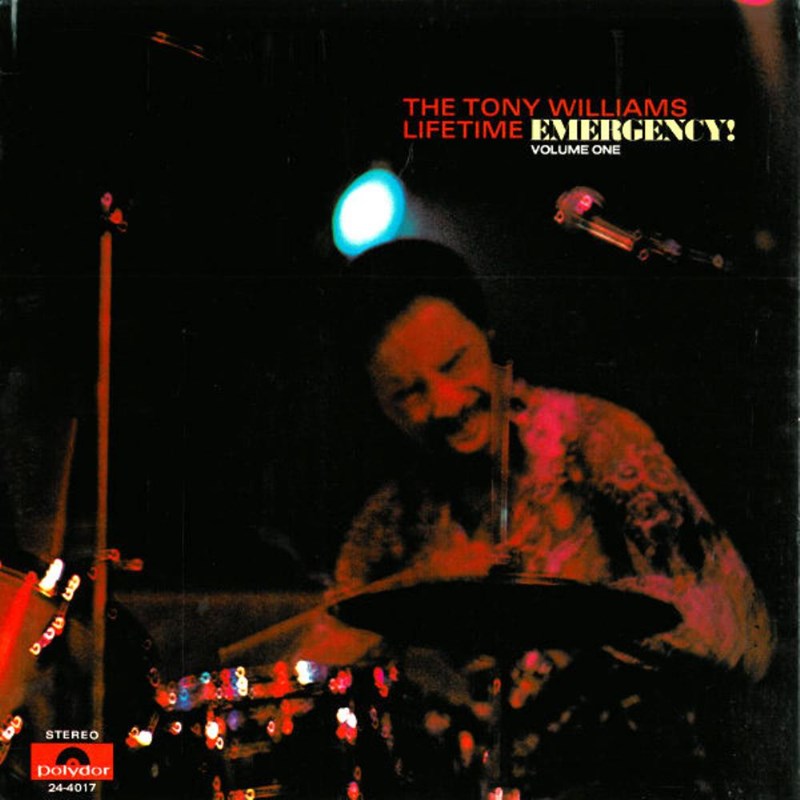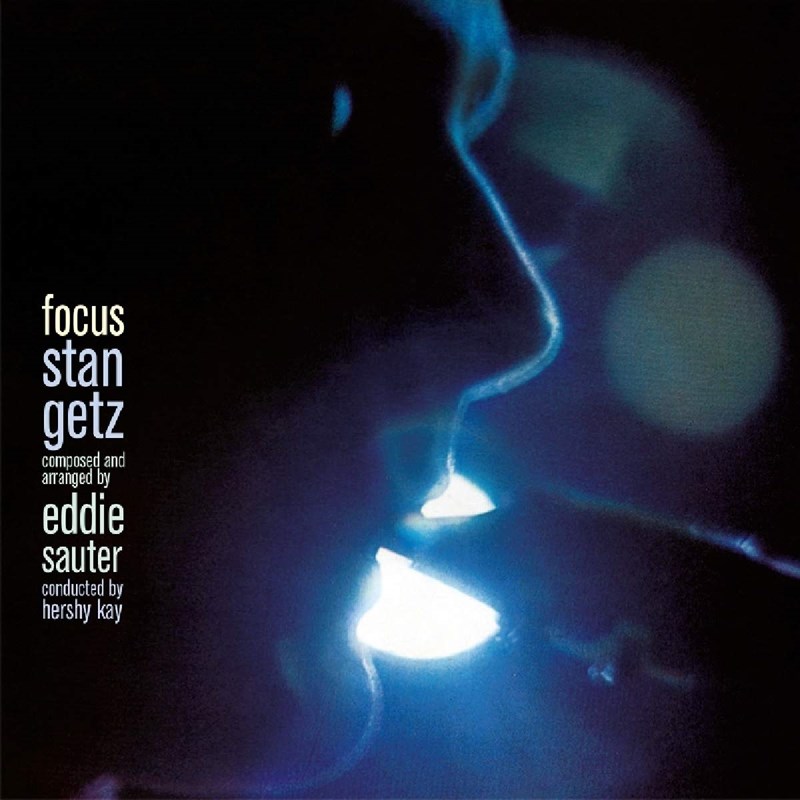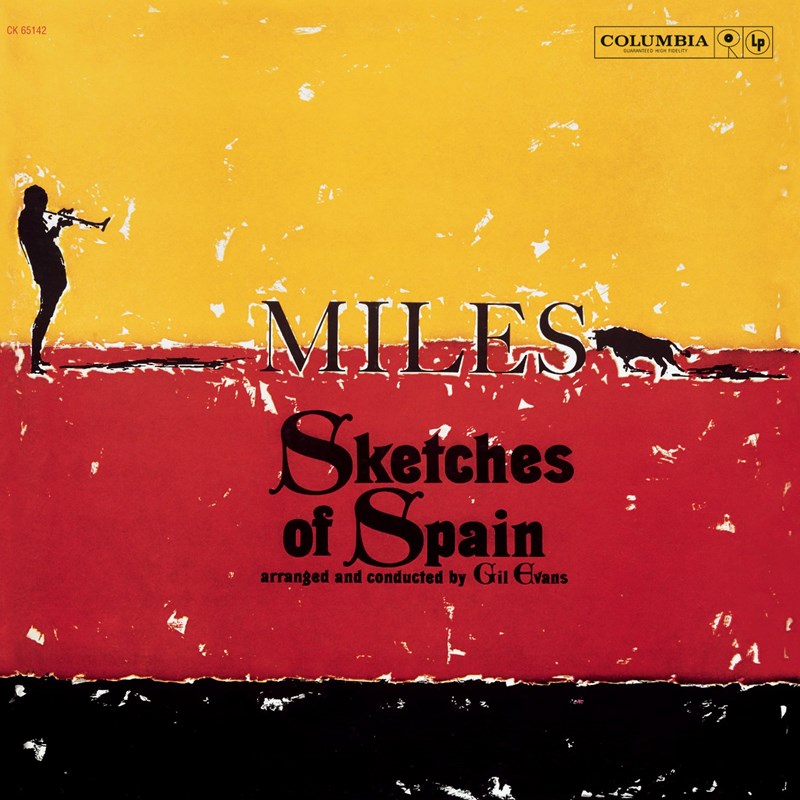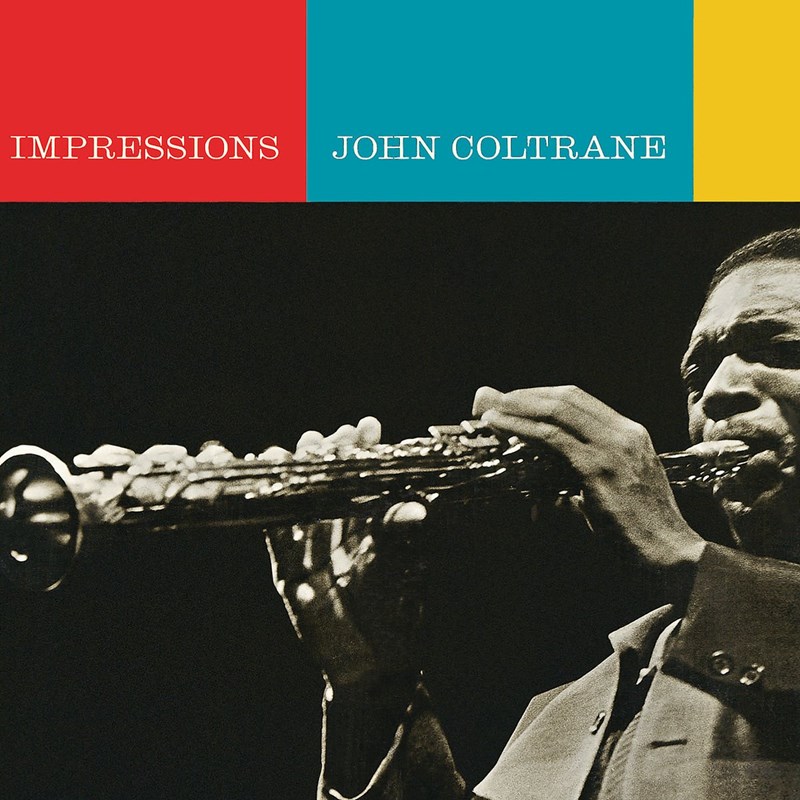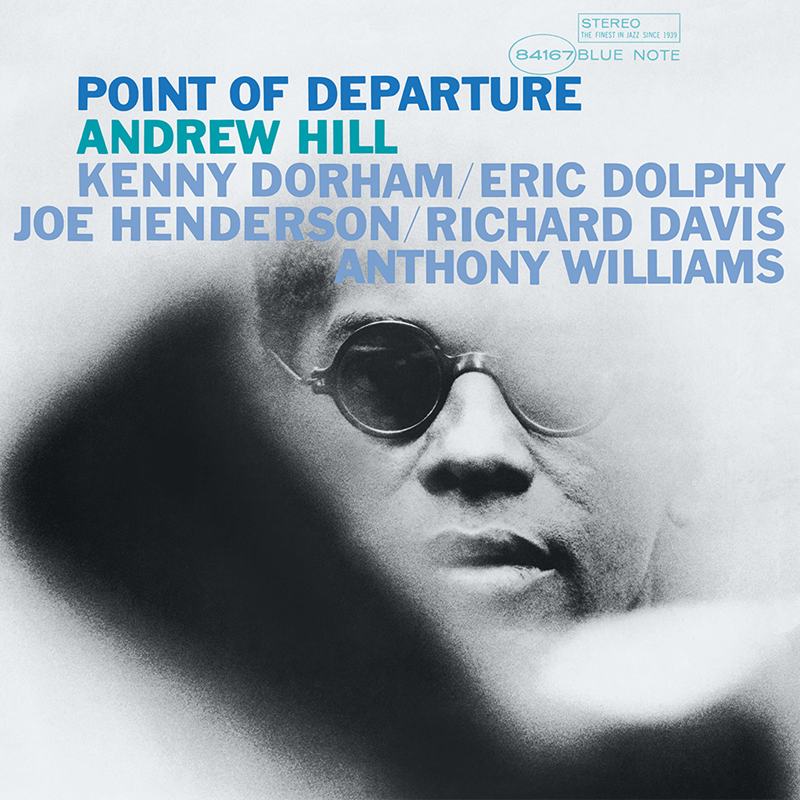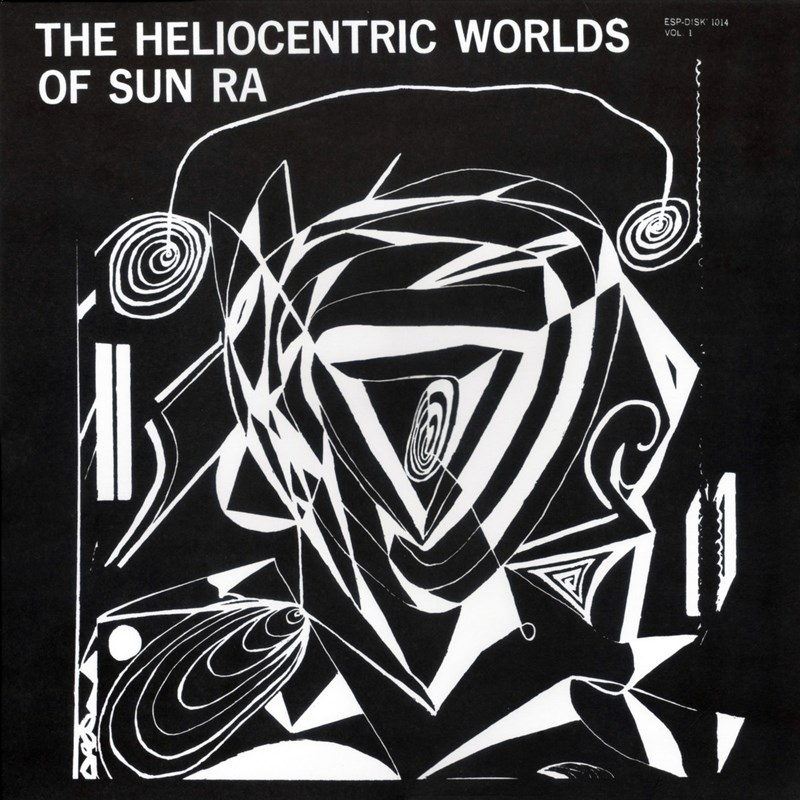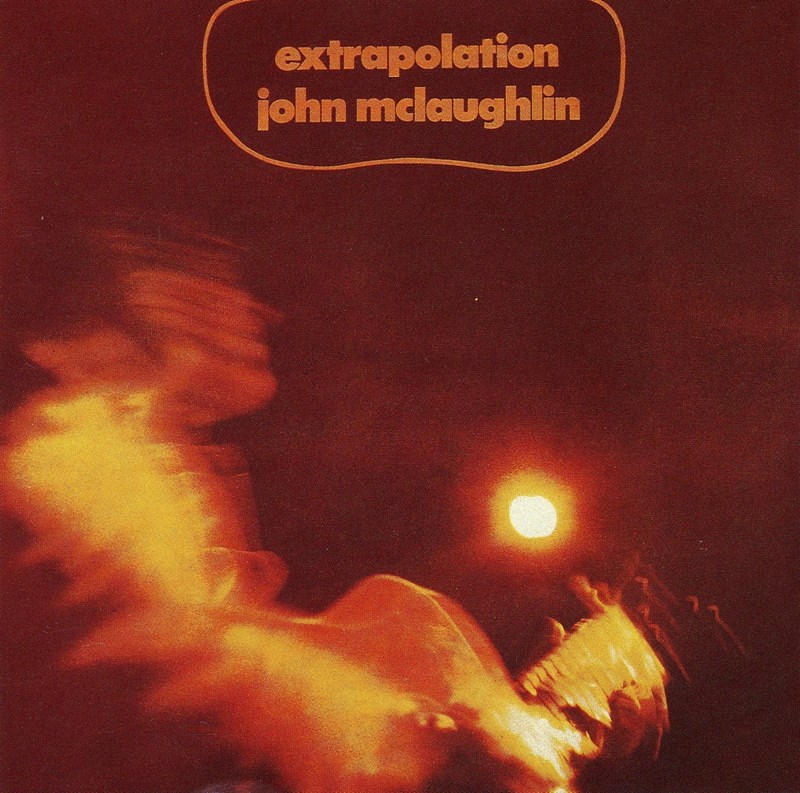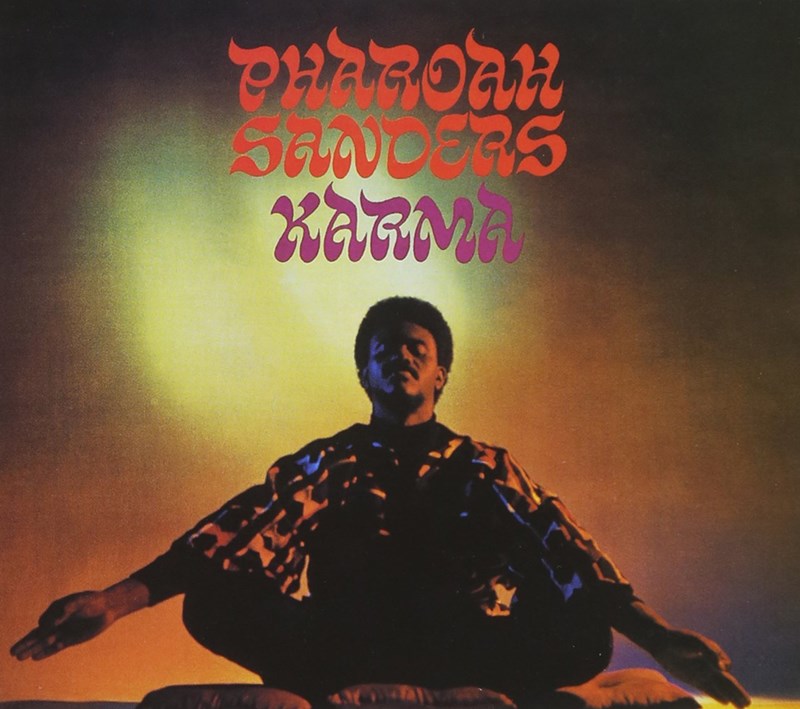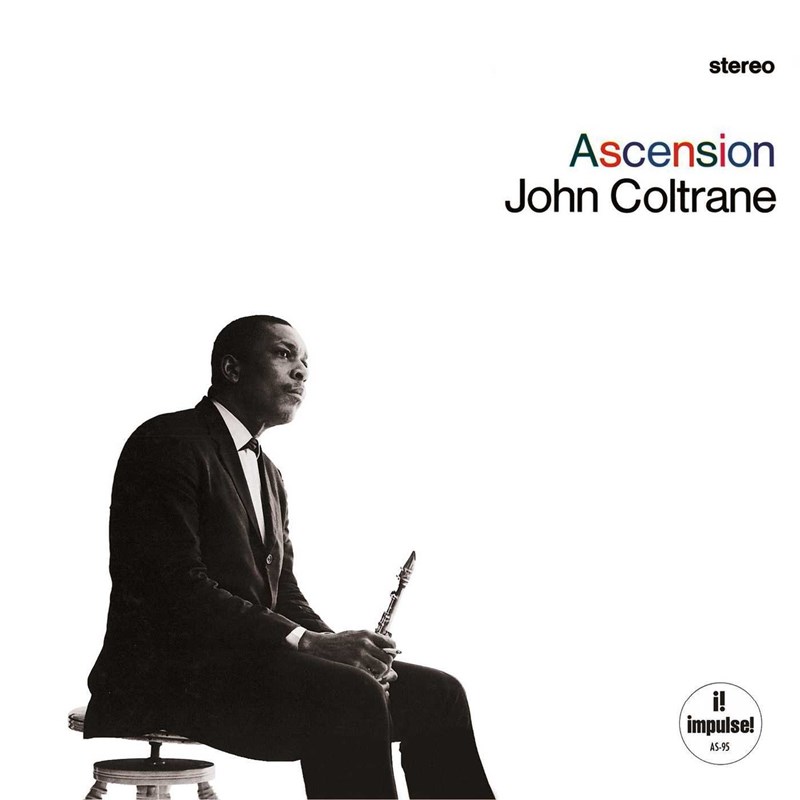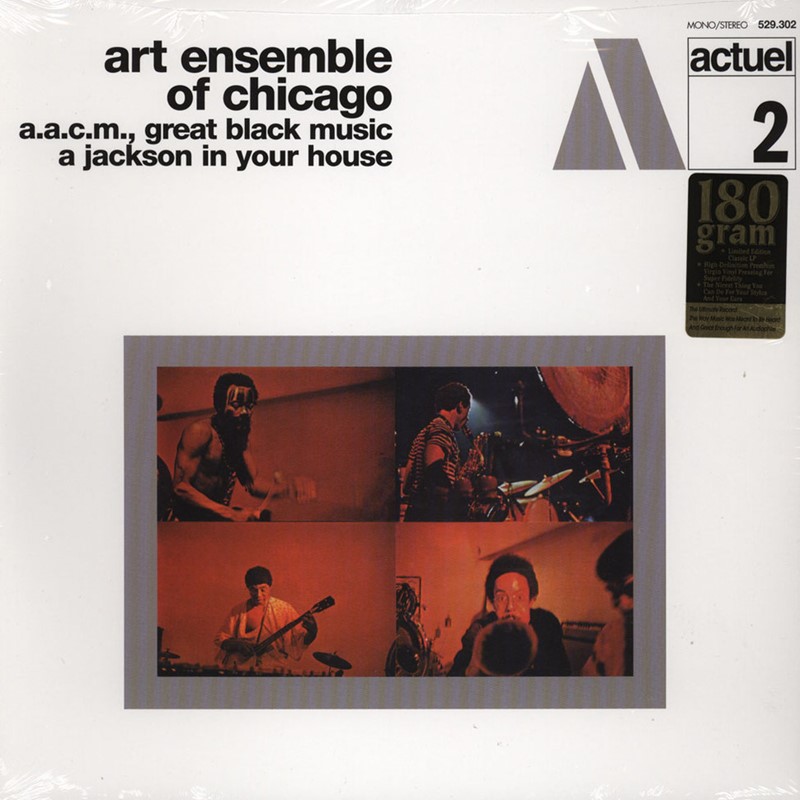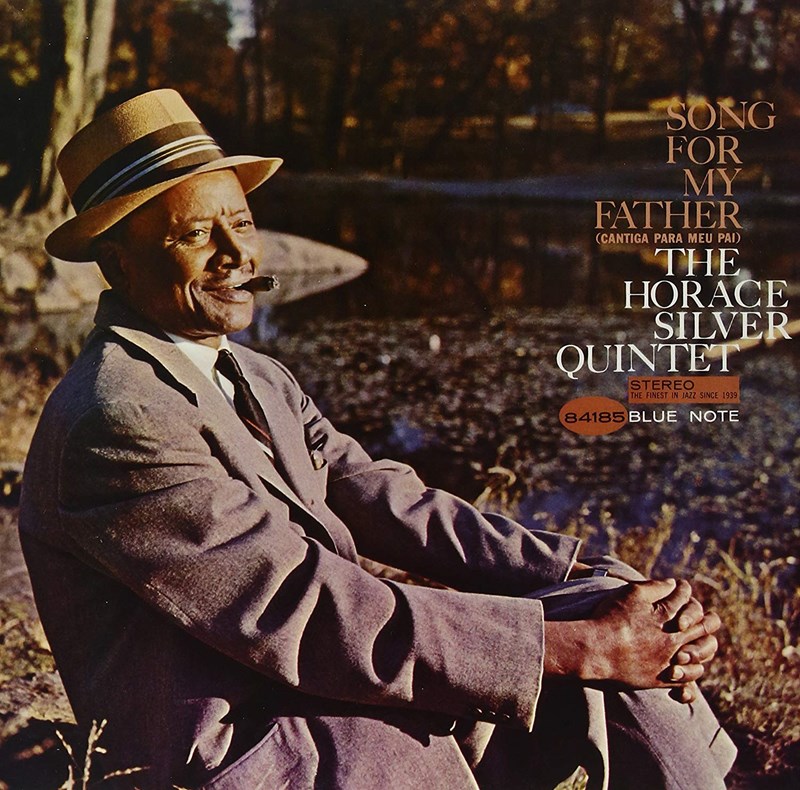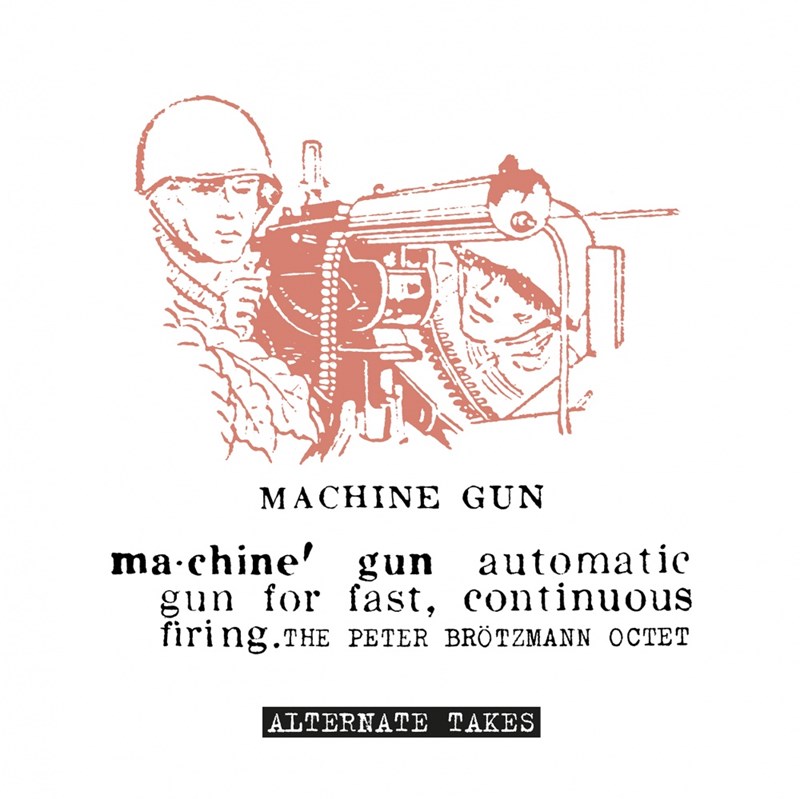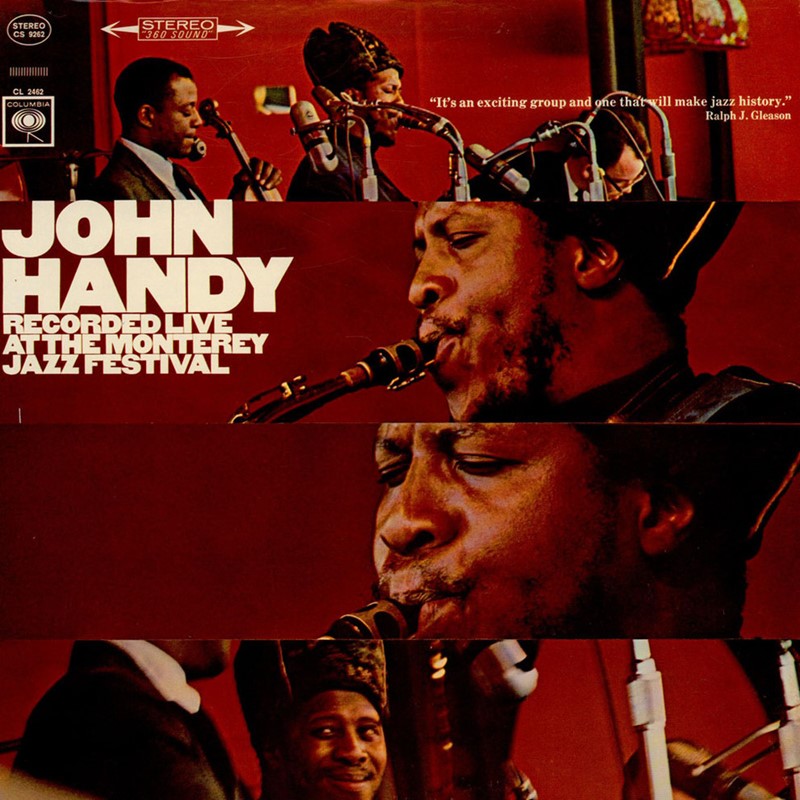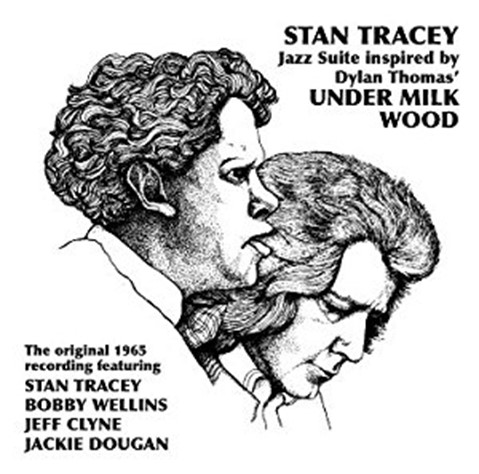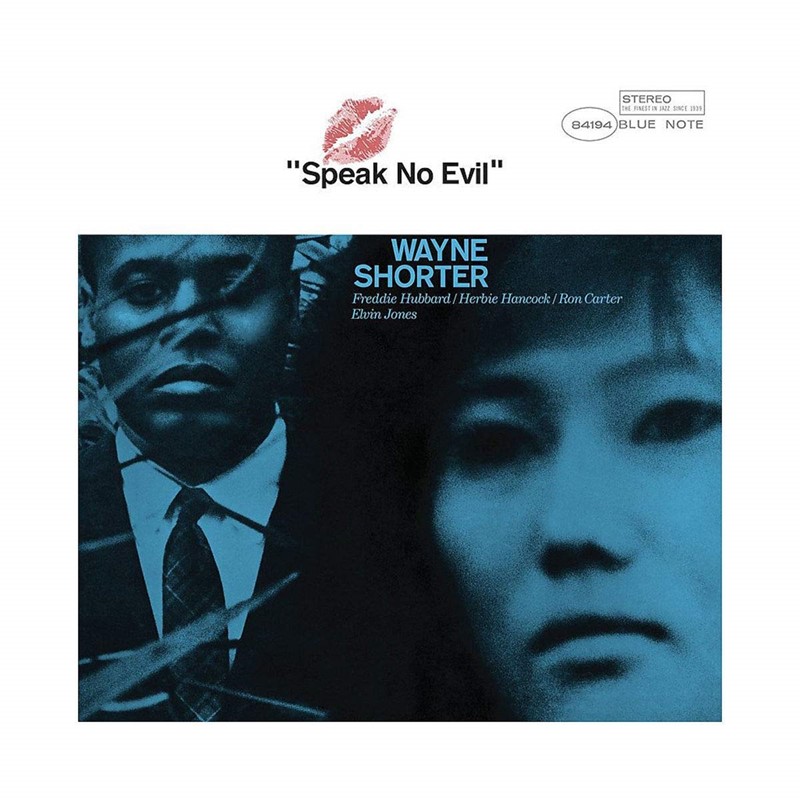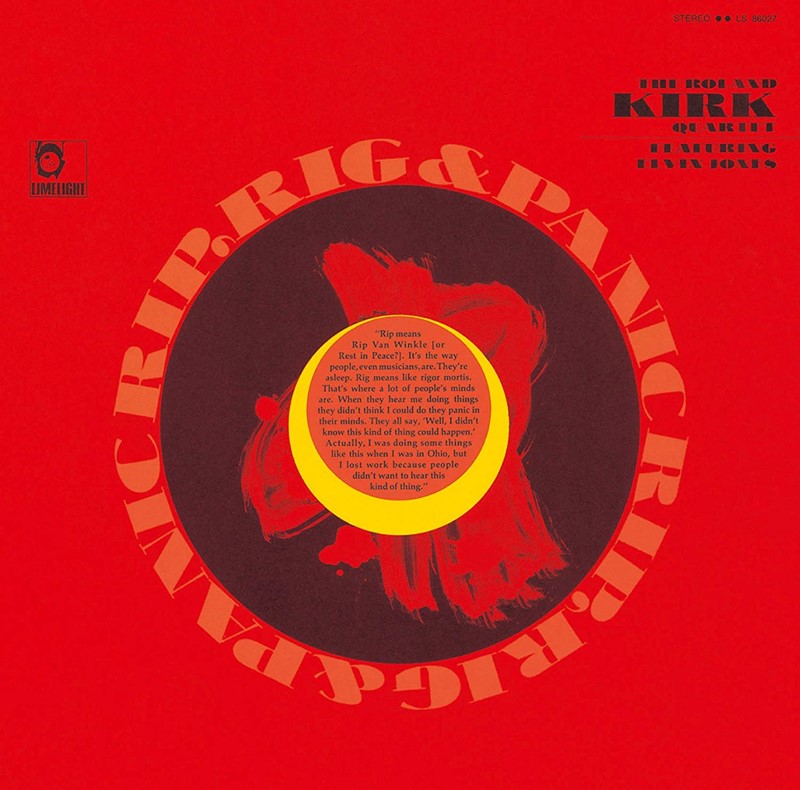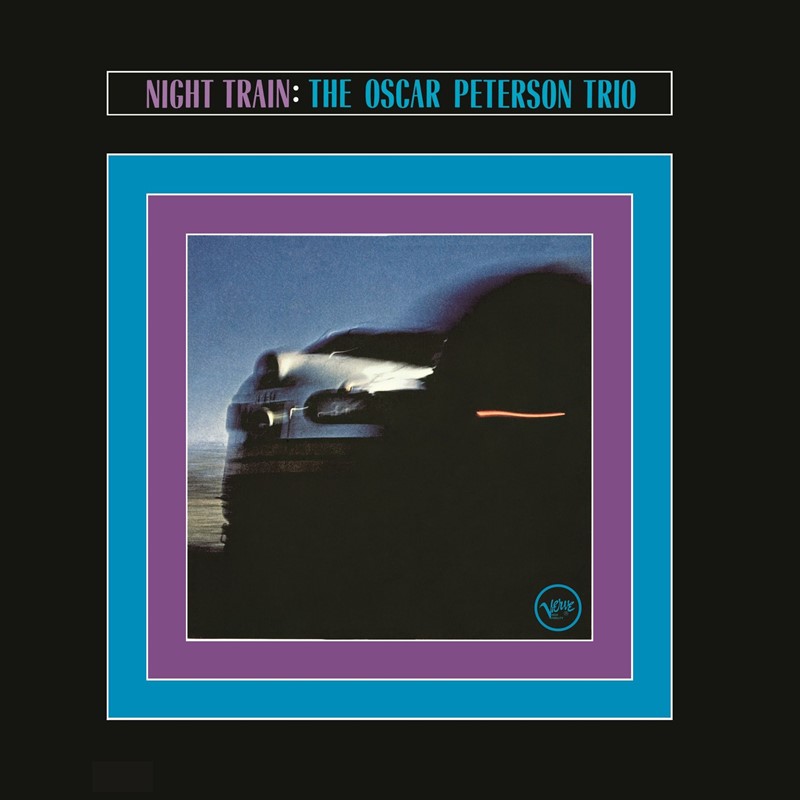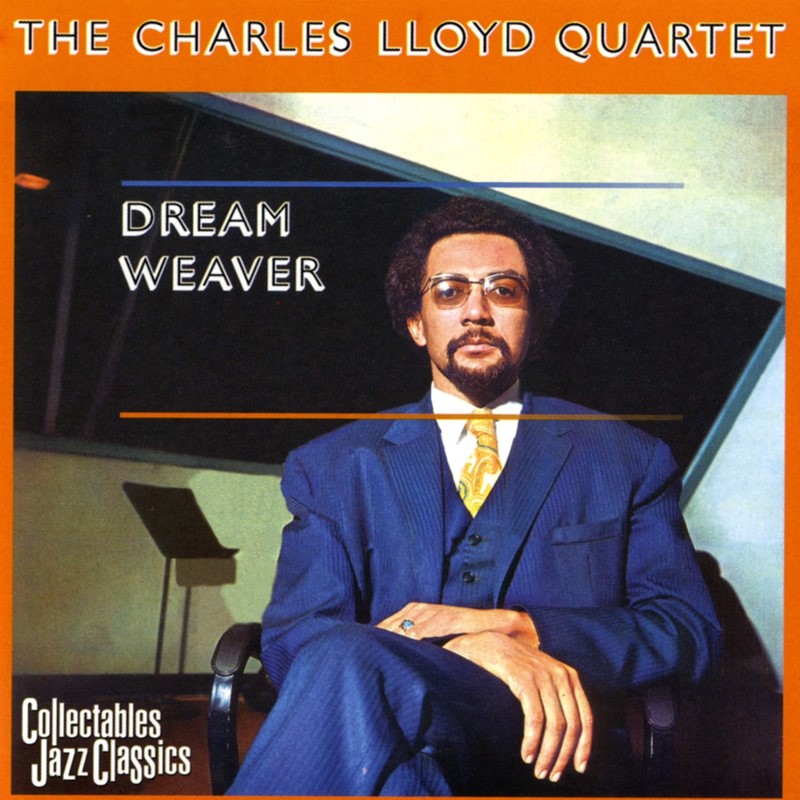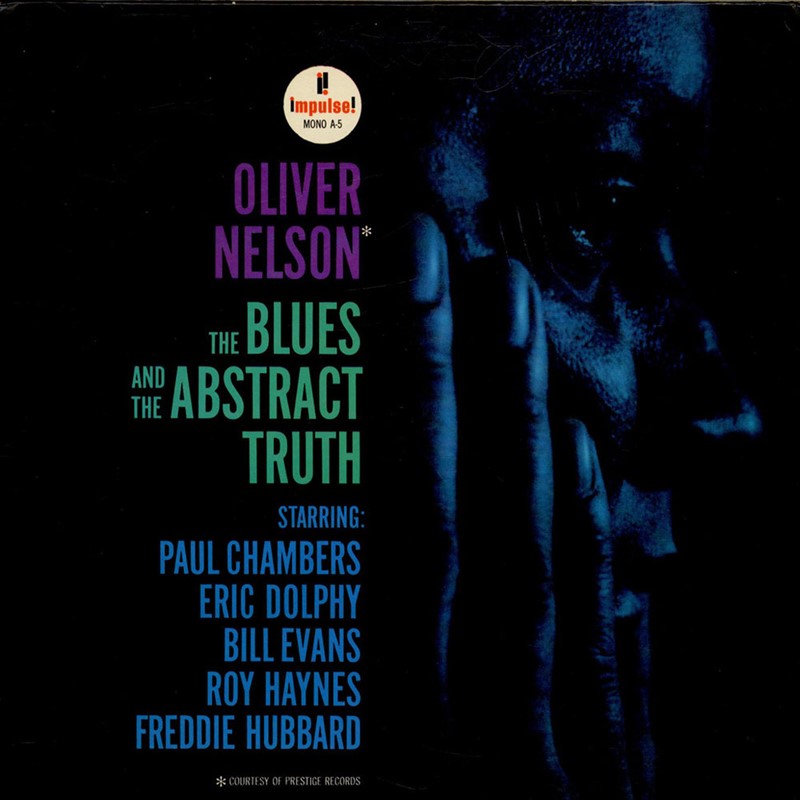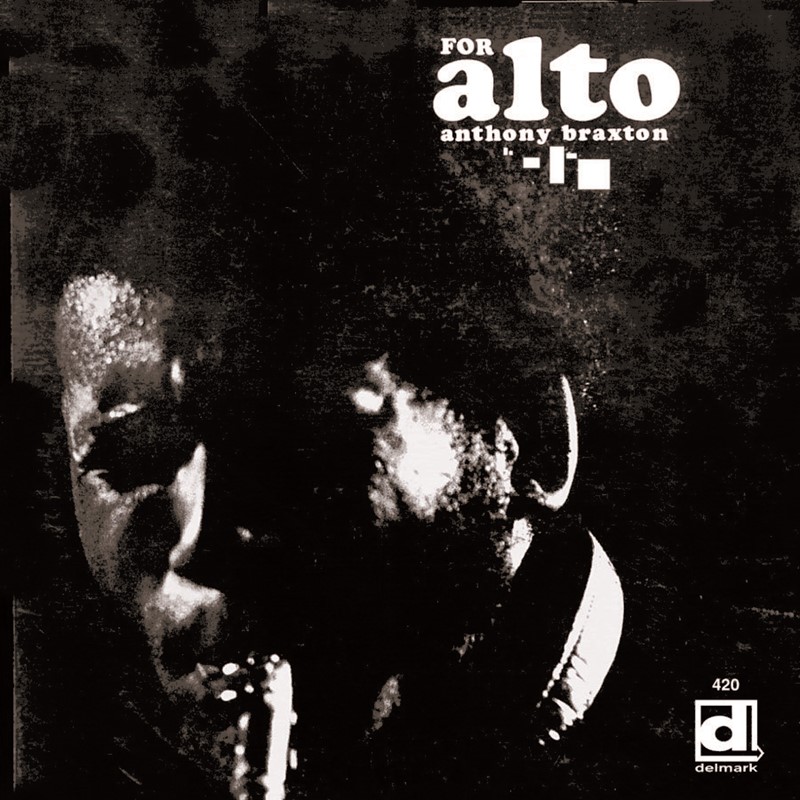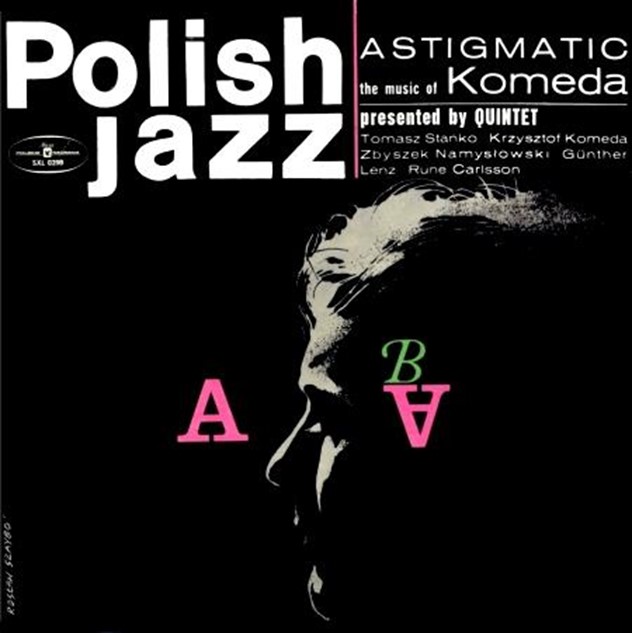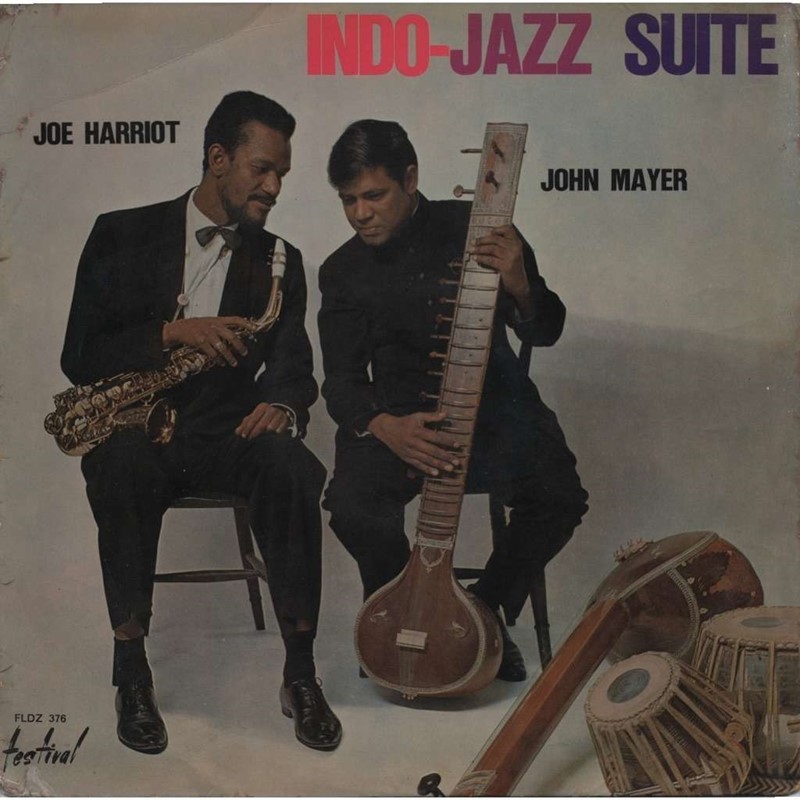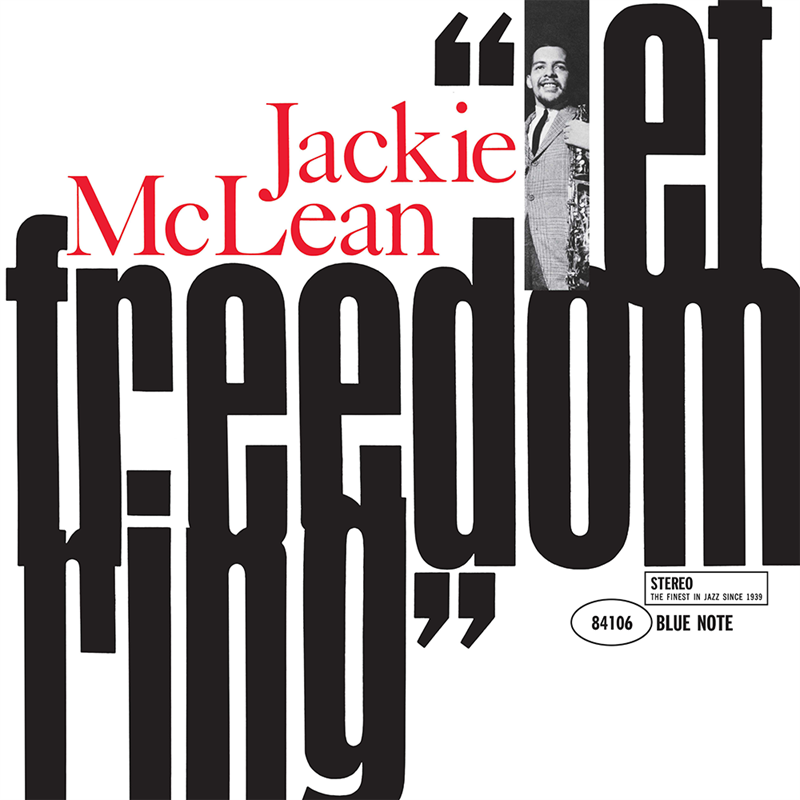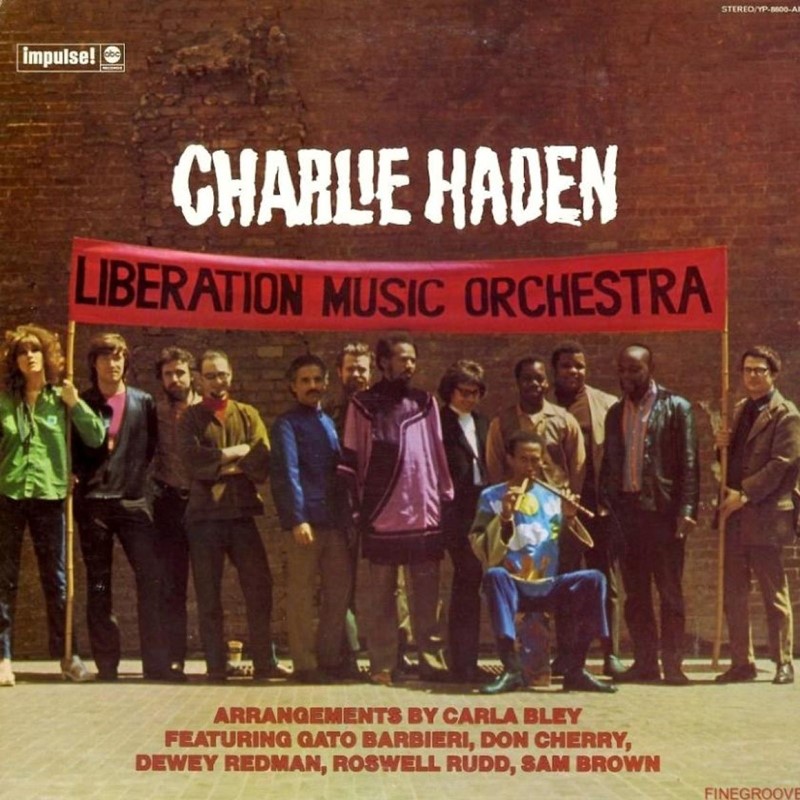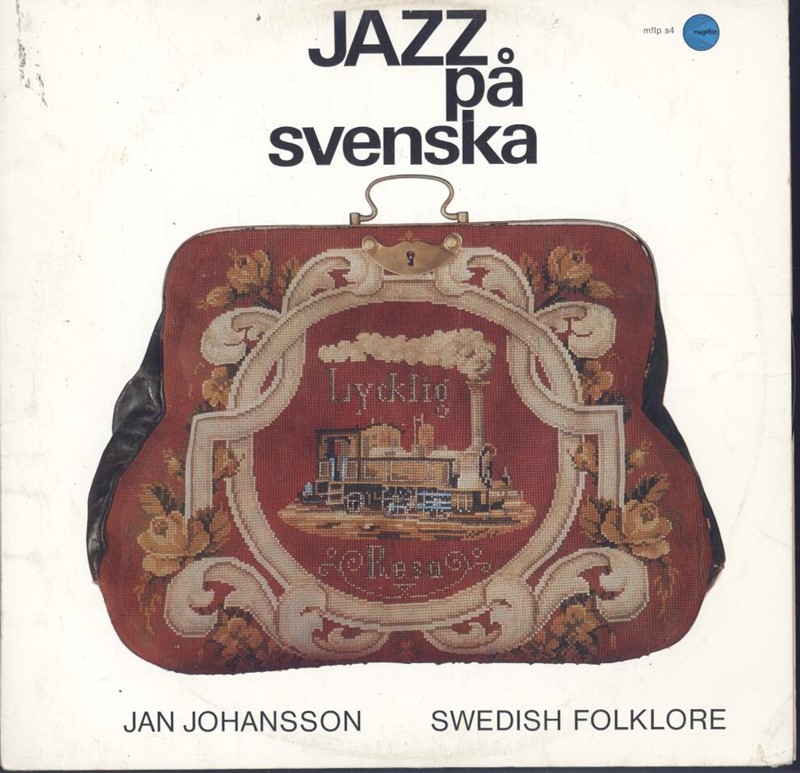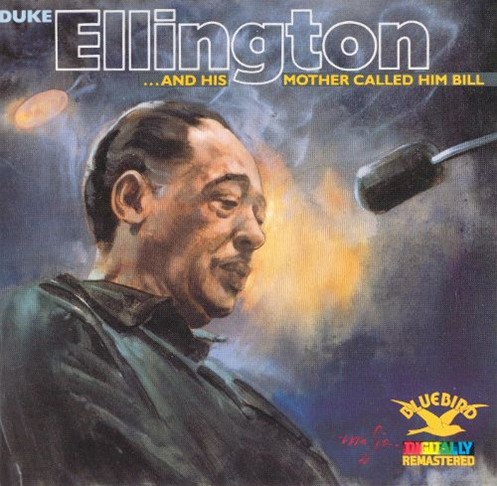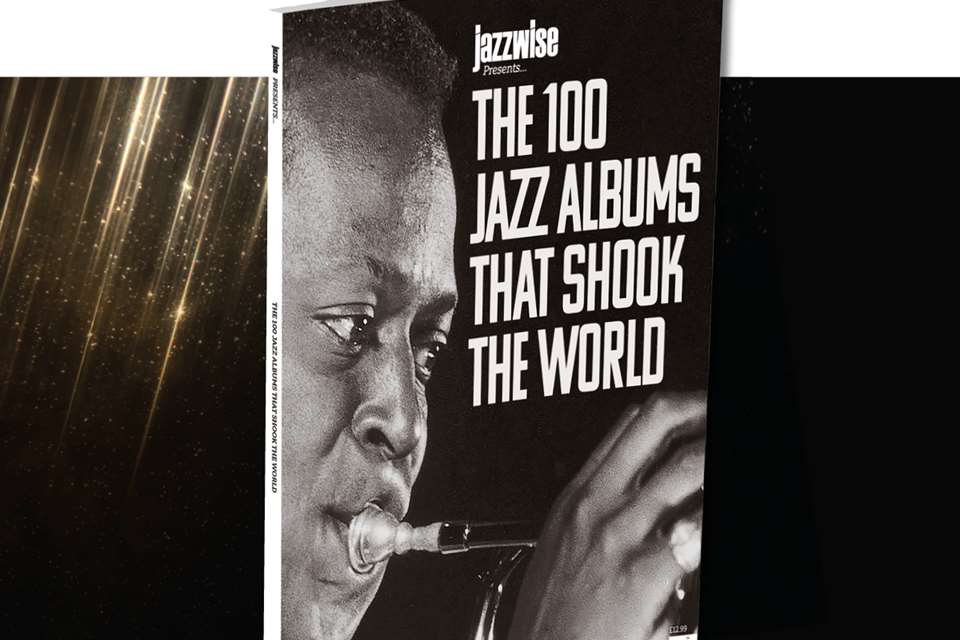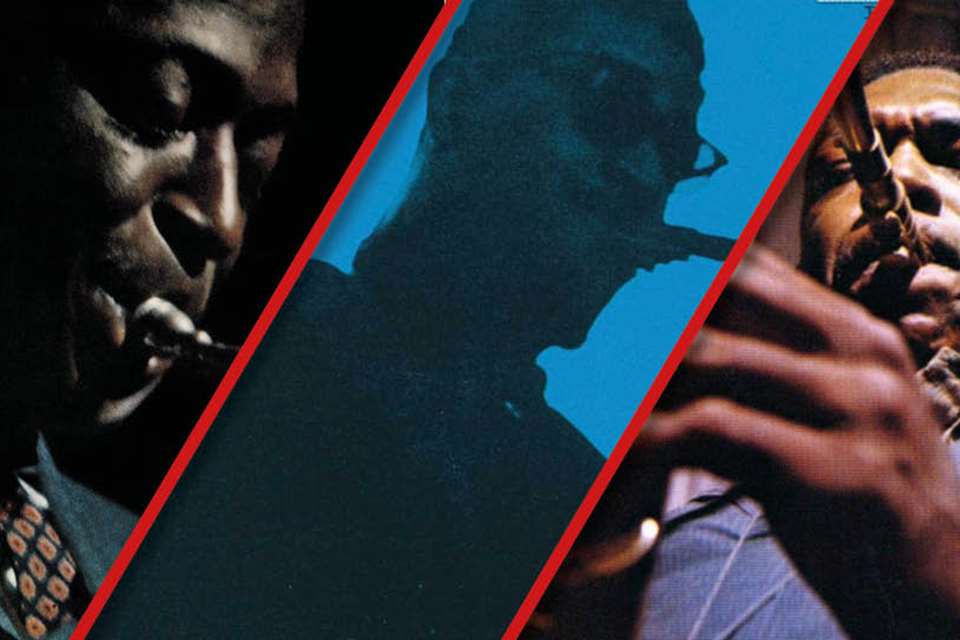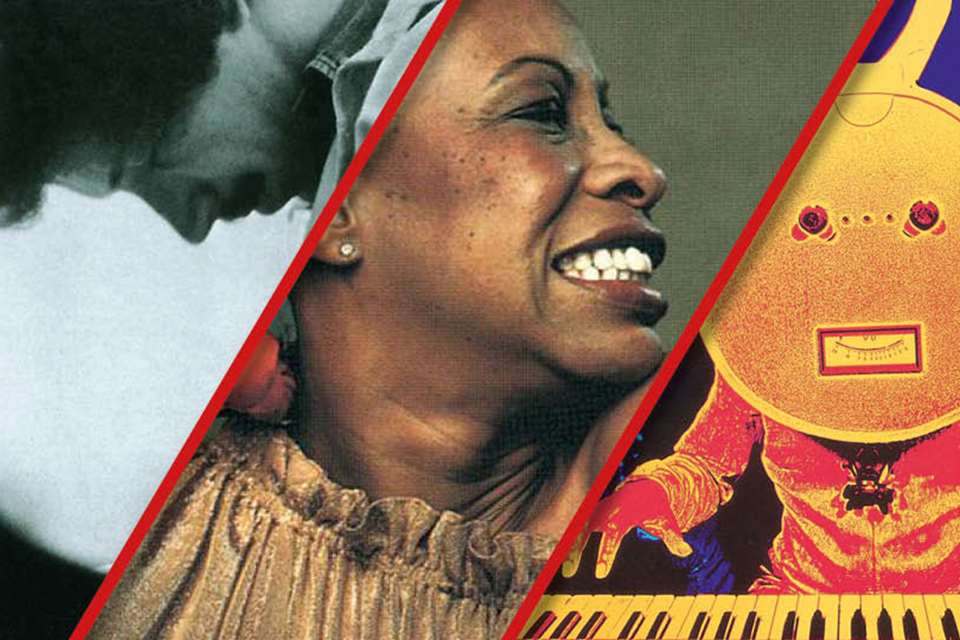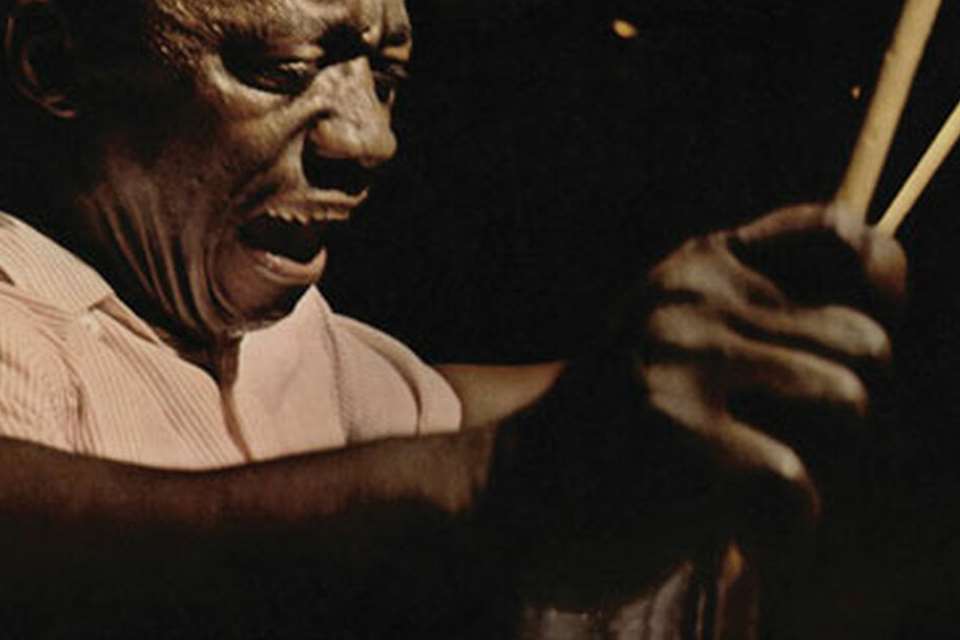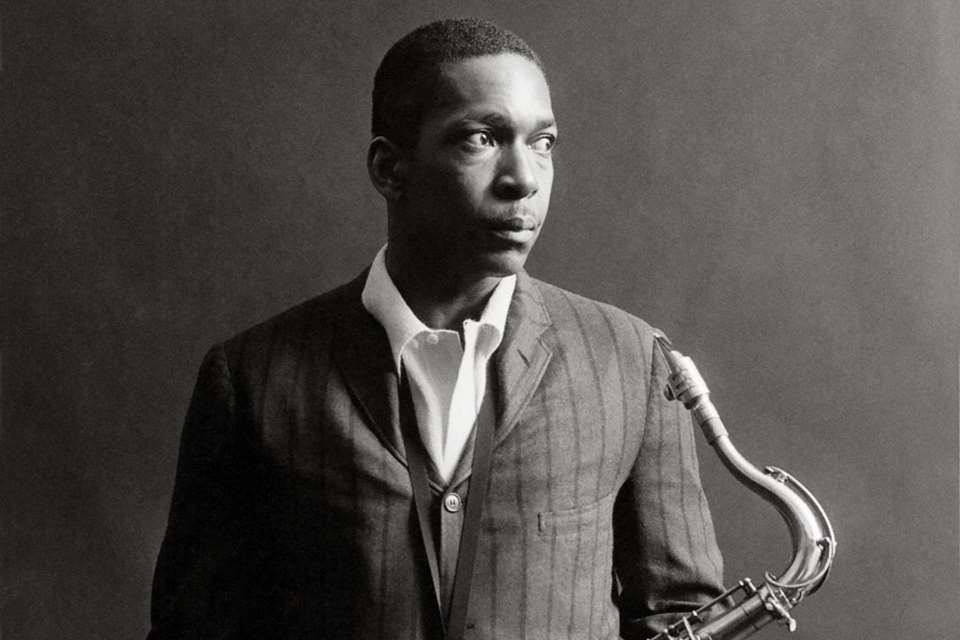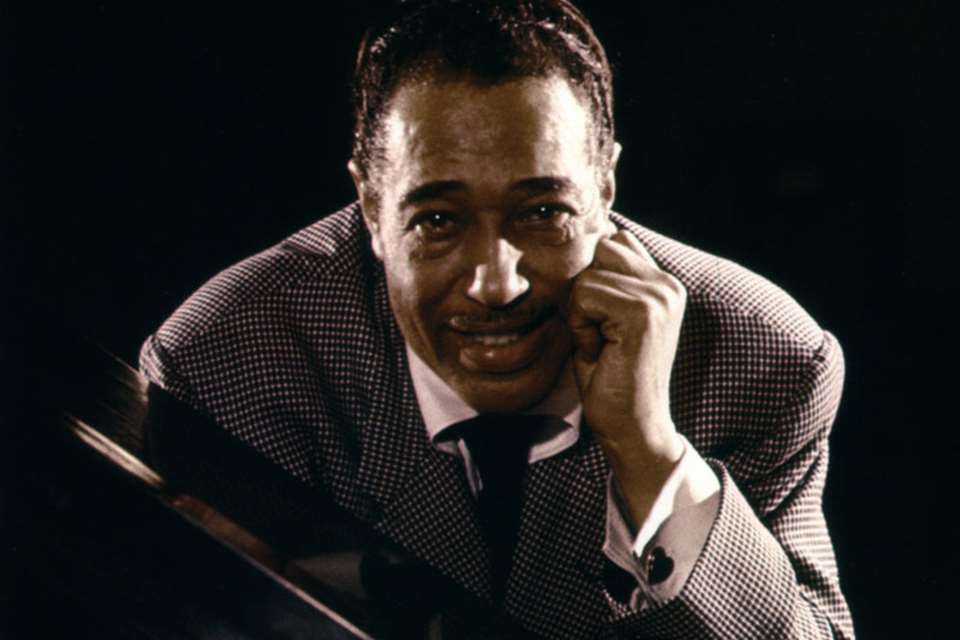Jazz Albums That Shook The World: The 1960s
Friday, May 7, 2021
The quantity and diversity of great jazz albums recorded in the 1960s means that any list of great albums that claims to be in any way 'definitive' is on very shaky ground. Nonetheless, the albums highlighted below are benchmarks in the history of jazz on record and if you are discovering jazz for the first time then you've just found the perfect place to start. Let's start with a masterpiece...
The list featured below was originally published in the August 2006 issue of Jazzwise magazine and quickly established itself as a key reference for anyone interested in exploring the rich history of jazz on record.
We have now taken the concept much further with a brand new publication – The 100 Jazz Albums That Shook The World – a 100-page definitive guide to the most important and influential jazz albums that have gone on to change and shape the course of the music from the 1920s to the present day.
The 100 Jazz Albums That Shook The World is exclusively available in print and includes new in-depth editorial on each album from Jazzwise's acclaimed team of writers, plus in-depth features on the making of the top three albums, a look at the albums that almost made the cut and a guide to buying the featured titles on LP and CD.
Order your copy today at: www.magsubscriptions.com
John Coltrane
A Love Supreme
Impulse!
John Coltrane (ts, v), McCoy Tyner (p), Jimmy Garrison (b) and Elvin Jones (d). Rec. 1964
No matter how many times you approach this album it’s always greater than the sum of whatever parts you compile. Yes, it’s perfect, yes, it’s ambitious, yes it crosses over far from the usual jazz conceptions, yes it is couched as a suite of meditations-in-kind that give it a formal design way beyond 99 per cent of jazz albums. Yes, Coltrane plays like a man inspired by something more than the job immediately to hand, as do the other three musicians involved, and yes the themes are unremittingly sober. But that only scratches the surface of this album’s achievement. You can’t lay it at the door of Coltrane’s aspirations, because good intentions often lead to artistic disasters in music as well as every other aesthetic discipline, but it is possible that his own complete commitment to his testimony of spiritual re-birth happily coincided with a day in the studio where he was truly touched to open his soul through the medium of his saxophone, for his playing on this record is almost terrifyingly open, intense and soul-shattering, even when he is simply stating a theme.
This is a very powerful part of the album’s pull, as is the tautness of each selection’s form, and it must also account for the hold it has sustained magically over listeners who otherwise venture rarely into any form of jazz, including the progressive rock fans of the late 60s and onwards. Within jazz itself, the album ensured that the music could no longer be considered a social or cultural also-ran, the spiritual and humanistic concerns that made up its inspiration demanding that it be treated in the same way as the master creations of the art-music of any culture. Nothing could be the same again. It still isn’t. Keith Shadwick
Bill Evans Trio
Sunday At The Village Vanguard
Riverside
Bill Evans (p), Scott LaFaro (b) and Paul Motian (d). Rec. 1961
Sadly terminated by the demise of LaFaro in a car crash only 10 days after the two Village Vanguard albums (this album and Waltz for Debby), this group did more than any other at the start of the 1960s to loosen the bonds of the Peterson/Jamal traditional trio approach, and its effects are still being re-interpreted. Sunday and Waltz are totally live and together they contain all 21 issued takes that were recorded in the afternoon and evening of the group’s last day at the Vanguard. The individual performers play with astonishing freedom, as well as listening intently to each other. Evans is bursting with energy and invention, even in the ballads, while LaFaro’s work is challenging yet melodic, provided you can follow his flights of fancy. It’s hard to choose between the two live albums although Sunday, the first to be issued, includes LaFaro’s originals (‘Gloria’s Step’ with its 5-bar sections and the 5/4 ballad ‘Jade Visions’). Brian Priestley
Miles Davis
Bitches Brew
Columbia
Miles Davis (t), Wayne Shorter (ss), Bennie Maupin (b cl), Joe Zawinul, Chick Corea (el p), John McLaughlin (g), Dave Holland (b), Harvey Brooks (el b), Lenny White, Jack DeJohnette (d), Don Alias (perc) and Jumma Santos (shaker). Rec. 1969
“Listen to this,” urged renowned jazz writer Ralph J. Gleason in the liner note of the original 1970 release. “How can it ever be the same?” And clearly it wasn’t. From Mati Klarwein’s warped Afro sci-fi artwork and Gleason’s Beat-influenced sleeve babble to the brain-melting, barrier-crunching music inside, Bitches Brew ripped up the rule book and redefined the parameters of jazz for the next three decades. And then some. A colossal, unruly combination of electric jazz impressionism, dense funk rhythms, psychedelic rock flavours and Stockhausen’s dark soundscapes, topped by some of Miles’ most stunning and evocative trumpet work. A jazz-rock volcano that spat controversy with every eruption. Jon Newey
Eric Dolphy
Out to Lunch
Blue Note
Eric Dolphy (f, as, b cl), Freddie Hubbard (t), Bobby Hutcherson (vb), Richard Davis (b) and Tony Williams (d). Rec. 1964
This famous 1964 set made if anything more impact than Dolphy’s debut album. He’d found a stimulating environment and the active involvement of a youthful cast - Tony Williams now gone, Freddie Hubbard out of action, Richard Davis out of jazz and only Bobby Hutcherson out there, the session is a historical artefact that’s belied by the freshness of its music. Items like “Gazzelloni” and the stunning “Hat and Beard” have achieved immortality, but also held out a huge promise for the future. Four months and four days later, Dolphy was dead. Brian Priestley
Albert Ayler Trio
Spiritual Unity
ESP-Disk
Albert Ayler (ts), Gary Peacock (b) and Sunny Murray (d). Rec. 1964
Spiritual Unity was Albert Ayler’s first recording for New York lawyer, turned record label owner, Bernard Stollman’s ESP-Disk. Over 40 years on it remains a landmark recording. In the company of bass player Gary Peacock and drummer Sunny Murray, Ayler lays down his new testament of jazz with a set that sent the engineer famously scurrying out of the studio. The power, ecstasy and originality of Spiritual Unity remains as fresh, exciting and new as the day it was recorded with Ayler pouring out his soul through his instrument while Peacock and Murray provide powerful, unobtrusive back up that adds extra colour and dimension to the proceedings. Although it has been reissued numerous times before, if you still don’t own a copy of this seminal date then now is most definitely the time. Edwin Pouncey
Ornette Coleman
Free Jazz
Atlantic
Ornette Coleman (as), Freddie Hubbard, Don Cherry (t), Eric Dolphy (b cl), Scott LaFaro, Charlie Haden (b), Ed Blackwell and Billy Higgins (d). Rec. 1960
Taken together, the five sets that start with 1959’s The Shape Of Jazz To Come and conclude with 1962’s Ornette! still make for something of a shock to the system decades later for two simple reasons: the cast iron strength of character of Coleman as a soloist, which also holds true for his accompanists, who are actually more like co-pilots; and the absolute boldness of the writing which both confirms the vitality of the “avant-garde” or “new music” and makes the crucial point that its central development away from bebop’s clearly mapped chords and set meters took it “back” to early blues and country as well as forward to an undefined idiomatic space. Ultimately, Coleman’s talent is for making music that is as complex as it is primal. And not affected. The Free Jazz album by the double quartet is striking for the increased sonic range provided by such as Eric Dolphy and Freddie Hubbard as well as the sheer drama of its collective whoop and holler, though the performance arguably has less appeal than the music by the smaller groups. Kevin Le Gendre
The Incredible Jazz Guitar of Wes Montgomery
Riverside
Wes Montgomery (g), Tommy Flanagan (p), Percy Heath (b) and Albert Heath (d). Rec. 1960
The Incredible Jazz Guitar of Wes Montgomery, with Tommy Flanagan and the brothers Percy and Tootie Heath, was the album which introduced Wes to the world. It was recorded in New York in January 1960, when Wes was already 35 and with all his astounding skills in full working order. He would sometimes claim that he had been a much better player ten years earlier. Nevertheless, the wisdom of his soulful thumb-picked lines and the technical mastery of his chordal and octave choruses shook the jazz world rigid, the guitar community in particular. The silken speed of ‘Airegin’, the sumptuous balladry of ‘Polka Dots and Moonbeams’ and the waltztime funk of ‘West Coast Blues’ are impressive still. Jack Massarik
Cecil Taylor
Live At The Café Montmartre
Debut
Taylor (p), Jimmy Lyons (as) and Sunny Murray (d). Rec. 1962
Such is the overwhelming idiosyncrasy of Taylor’s language it’s easy to overlook the fact that it was not created in a vacuum. He had to come from ‘somewhere’ and draw on established sources. Like all originals, he had influences and inspirations. Hence these performances from an early 1960s European trio tour are vital in affording that insight and do not disappoint. Although the incessantly probing, poundingly percussive approach to the keyboard is already a signe particulier, Taylor’s debt to the founding fathers, from Johnson and Tatum to Nichols and Powell, is clear in the more conventional rhythmic-harmonic moments where swing and changes are relatively easy to follow, though they are like flashes such is the speed of execution. In any case there is something deliciously subversive about hearing Taylor’s riptide interpretation of an American songbook staple such as ‘What’s New?’, in which the romanticism is inflamed rather than extinguished, whereas the wider point about the pianist’s aesthetic – melody is as effective in the bass as it is in the treble or mid – is consistently made throughout the set. Alto saxophonist Jimmy Lyons and drummer Sunny Murray stake a claim as some of the best accompanists Taylor ever had, especially the former for the sheer pungent strength of his tone, while bassist Kurt Lundstrom is an effective guest on the bonus track from a gig at the Golden Circle. Kevin Le Gendre
Herbie Hancock
Maiden Voyage
Blue Note
Freddie Hubbard (t), George Coleman (ts), Herbie Hancock (p), Ron Carter (b) and Tony Williams (d). Rec. 1965
All the way through his time with Miles Davis, Herbie Hancock continued to record under his own name, (as well as with other leaders such as Bobby Hutcherson, Lee Morgan and Wayne Shorter). This was his first true concept album, designed - as Herbie wrote at the time - to 'capture the vastness and majesty’ of the sea, including 'the graceful beauty of the playful dolphins, the constant struggle for survival of even the tiniest sea creatures, and the awesome destructive power of the hurricane.' Maybe most of us have forgotten that liner note, and Nora Kelly's specially written story that went with it, but we all know the music - ranging from the title track to 'The Eye of the Hurricane’ and 'Dolphin Dance’. Alyn Shipton
Stan Getz & João Gilberto
Getz/Gilberto
Verve
Stan Getz (ts), João Gilberto (v, g), Antonio Carlos Jobim (p), Tommy Williams (b), Milton Banana (perc) and Astrud Gilberto (v). Rec. 1963
We’re talking Stateside in the early 1960s and in much the same way that The Beatles’ first album spawned a whole generation of American wannabes, the unprecedented success of Getz’s foray into the realms of bossa nova (‘jazz samba’) not only motivated almost as many bandwagon jumpers, but added a whole new genre to the contemporary jazz vocabulary. This official remastered 50th anniversary reissue (containing both mono and stereo versions) confirms that half-a-century on his bossa nova recordings have never been bettered and still sound freshly minted. As with Miles’ Kind Of Blue, there can hardly be any Jazzwise devotees who aren’t familiar with both this sensuous material and the equally sensuous sound of Stanley’s saxophone. End of commercial. Roy Carr
Charles Mingus
The Black Saint And The Sinner Lady
Impulse!
Rolf Ericson, Richard Williams (t), Quentin Jackson (tb), Don Butterfield (tba), Jerome Richardson (fl, ss, bar s), Dick Hafer (fl, ts), Charlie Mariano (as), Jaki Byard (p), Jay Berliner (g), Charles Mingus (b, p) and Dannie Richmond (d). Rec. 1963
The Black Saint is widely acknowledged as a Mingus masterpiece. Part of Mingus’ compositional plan involved hidden repeats of various taped sections and covert (i.e. unadmitted) overdubbing, largely consisting of bringing back Mariano to add a further improvised line to roughly one-third of the album. The overall achievement, however, combined some of Mingus’ most distinctive preoccupations (Ellington, Afro-Spanish music, improv and collective improv) into a set unlike anything else he ever achieved. Of course, it relied hugely on contributions from the sidemen – Richmond, Mariano (who perhaps never played better), Jackson (with plunger mute) and the surprise choice of finger-style session man Berliner. Brian Priestley
The Tony Williams Lifetime
Emergency!
Polydor
Tony Williams (d), Larry Young (org) and John McLaughlin (g). Rec. 1969
This bold attempt to expand the boundaries of jazz in a dramatic jazz, blues, rock, Hendrix, MC5 amalgam left temperate listeners shell shocked and critics speechless. Today, the mere mention of jazz-rock prompts cries from establishment critics of “sell-out,” but if this is selling-out, then maybe they should consider another line of work. This is jazz, rhythm and electricity writ large in a tumbling roller coaster of ideas. No wonder the album was called Emergency, with every member of the band having so much to say but so little time to say it. Stuart Nicholson
Stan Getz
Focus
Verve
Stan Getz (ts), Roy Haynes (d), chamber string group and Hershey Kay (cond). Rec. 1961
Focus was always Getz’s favourite album and it’s easy to see why. From the opening drama of ‘I’m Late, I’m Late’ with Roy Haynes’ scurrying brushes, Getz is on his mettle, inserting his sublime extemporisations into Sauter’s attractive structures. Getz had commissioned Sauter, an arranger best known for his work with the Benny Goodman orchestra, to write what amounts to a seven-part suite. Although there is no obvious linking theme, Sauter said he saw the individual pieces as individual stories or fairy tales.
As Dave Geliy makes clear in his biography of Getz, nothing quite like this had been done before by anyone, let alone by Getz himself. Armed only with a basic score, Getz was to improvise what amounted to his own commentary on Sauter’s music, offering far more than mere embellishment, way away from the conventional re-shaping of a 32-bar popular song or a 12-bar blues. Nor is this kind of orchestral collaboration to be compared to the ‘with strings' approach typified by Bird’s dalliances, for that also was based on re-workings of popular songs. Nor, for that matter, is there any sense here of ennui, of the strings cluttering up the place.
Focus is a true collaboration, operatic in its scope, between composer and performer, and between orchestra and soloist. It marks the moment when Getz transcended the normal workaday world of the jazz soloist and confirmed his status as an artist of consequence. Jaunty at times, tender at others, there is beauty in every bar. A must-have. Peter Vacher
Miles Davis
Sketches Of Spain
Columbia
Miles Davis (t, flhn), orchestra and Gil Evans (cond, arr). Rec. 1960
1958’s Porgy And Bess was the jazziest of the Miles-and-Gil collaborations, while its predecessor Miles Ahead was the most innovative and groundbreaking, in its concerto format and breadth of material. Sketches Of Spain is the masterpiece that leaves all possible comment falling short and the contents falling outside of most categories before or since. In the second half of the 1950s, a lot of talk and work went into trying to create the “third stream” of jazz-meets-classical-and-lives-happily-after. Compared to its few relatively acceptable remnants, Sketches dwarfs the theory and stands on its own. It’s also one of the great incarnations of “modal jazz”, both in parts of the ‘Concierto de Aranjuez’ and the rest of the more folk-derived material. Best of all, you don’t think (except during the majestic ‘Saeta’) in terms of tourist-image Spain. Brian Priestley
John Coltrane
Impressions
Impulse!
John Coltrane (ss, ts), Eric Dolphy (bcl, as), McCoy Tyner (p), Reggie Workman, Art Davis, Jimmy Garrison (b) and Elvin Jones (d). Rec. 1961 and 1963
This was Coltrane’s second scoop into the Aladdin’s cave of music he’d made at the Village Vanguard in November 1961. The first, released as At The Village Vanguard in 1962, had whipped up a storm of criticism and, through the blues ‘Chasin’ The Trane’, served notice to a new generation about the music to come. This one went even further – India threw open the floodgates to the east in jazz, while ‘Impressions’ is 14 minutes of solid gold inspiration from Trane and Elvin. The 1963 studio fillers, ‘Up Against The Wall’ and ‘After The Rain’, are two exquisite musical punctuation points. Keith Shadwick
Andrew Hill
Point of Departure
Blue Note
Andrew Hill (p), Kenny Dorham (t), Eric Dolphy (f, as, bcl), Joe Henderson (ts, f), Richard Davis (b) and Tony Williams (d). Rec. 1964
Andrew Hill's masterpiece is one of the genuine classics of 60s jazz. On paper, Eric Dolphy looks the most naturally suited of the three hornman to interpreting Hill’s original vision, but Kenny Dorham and Joe Henderson find their own highly effective ways into the music, while Richard Davis’ subtely wrought (and now rather more cleanly reproduced) bass work and the late Tony Williams’ polyrhythmic drumming round out a fabulously uncompromising session. Michael Kelly
Sonny Rollins
The Bridge
RCA Victor
Sonny Rollins (ts), Jim Hall (g), Bob Cranshaw (b), Ben Riley and Harry Saunders (d). Rec. 1962
Recorded in the same year as What’s New with some of the same personnel this marked Rollins' return after a three year sabbatical. 'I was getting very famous at the time,’ he explained ‘and I felt I needed to brush up on various aspects of my craft. I felt I was getting too much, too soon, so I said, wait a minute, I’m going to do it my way. I wasn't going to let people push me out there, so I could fall down. I wanted to get myself together, on my own. I used to practise on the Bridge, the Williamsburg Bridge because I was living on the Lower East Side at the time.' Later in the decade Rollins would begin to experiment in ways that he had not undertaken before but here he confines himself to pushing the envelope in terms of expression rather than technique or form. Hence he invested in emotional terms on 'God Bless the Child' for example, producing one of his most heartfelt improvisations. The collaboration with Jim Hall also adds texture and improvising complexity to this record, which has helped this album remain fresh to this day.
Sun Ra
The Heliocentric Worlds of Sun Ra, Vol 1
ESP-Disk
Sun Ra (p, mba, cel, perc), Chris Capers (t), Teddy Nance (tb), Bernard Pettaway (b tb), Danny Davis (f, as), Marshall Allen (picc, as, perc), Robert Cummings (bcl, perc), John Gilmore (ts, perc), Pat Patrick (bs, perc), Ronnie Boykins (b) and Jimhmi Johnson (perc). Rec. 1965
Heliocentric Worlds Volumes 1 and 2 steps beyond the border of accepted jazz playing to enter into another musical realm. There, the influence of such 20th century contemporary composers such as Edgar Varese, Stockhausen and Harry Partch can be distantly heard shuffling around in the mix. At the helm of these incredible sessions, however, is Sun Ra himself who, in his role as cosmic band leader and orchestrator, pushes and pulls his assembled Arkestra through a series of challenging and innovative musical hoops without ever losing direction or purpose. The playing throughout still sounds incredibly futuristic and exciting with Gilmore, Allen, Patrick and Boykins burning bright over Ra’s super-nova keyboard explosions. Edwin Pouncey
John McLaughlin
Extrapolation
Marmalade
John McLaughlin (g), John Surman (bs, ss), Brian Odges (b) and Tony Oxley (d). Rec. 1969
The 1960s was a decade when British jazz emerged with a strong identity with classic albums from the likes of Mike Westbrook, Michael Garrick, Don Rendell-lan Carr Quintet and Mike Gibbs to name but a few. But Extrapolation is the most prophetic, not only as a stepping stone in McLaughlin's career - from Extrapolation to Tony Williams’ Lifetime to Bitches Brew to the Mahavishnu Orchestra are indeed surprisingly small strides - but for how change in jazz in the late 1960s and early 1970s would shape up. This mixture of freedom (often “time, no changes”) and structure as well as the increasing sense of identity in McLaughlin's playing framed by Surman and Oxley make for compelling listening. Stuart Nicholson
Pharoah Sanders
Karma
Impulse!
Pharoah Sanders (ts) Leon Thomas (v, perc), James Spaulding (fl), Julius Watkins (Fr hn), Lonnie Liston Smith (p), Richard Davis, Reggie Workman, Ron Carter (b), Freddie Waits, William Hart (d) and Nathaniel Betis (perc). Rec. 1969
What a sleeve! The saxophonist’s meditative pose against a hazy burnt orange sun posits Karma as a healing sound for love children alarmed by the bomb, the bullet and the ballot. Coming out of the universal consciousness of mentor John Coltrane and borrowing some of the celestial majesty of his widow Alice, Sanders gets modal-hymnal on the enduring ‘The Creator Has A Master Plan’ and dazzlingly abstract on ‘Colors’. These heady cosmic grooves fed the creative fire of anyone from Roy Ayers to Lonnie Liston Smith in the 1970s and inspired the more discerning purveyors of pro-tools instrumental music such as The Cinematic Orchestra in the millennium. Kevin Le Gendre
John Coltrane
Ascension
Impulse!
John Coltrane (ts), Freddie Hubbard, Dewey Johnson (t), John Tchicai, Marion Brown (as), Archie Shepp, Pharoah Sanders (ts), McCoy Tyner (p), Jimmy Garrison (b) and Elvin Jones (d). Rec. 1965
Still an unruly, flawed, controversial, and deeply divisive album 40 years after its initial release, Ascension set the pace and the tone of the avant-garde music debate right through the back of the 1960s, quickly becoming a cutting-edge touchstone across the arts - even John Lennon told interviewers “of course I’ve heard Ascension" when asserting his late 1960s intellectual credentials alongside Yoko. Today, the music remains testingly difficult, the hell-hot fire and chaos from Trane’s supporting musicians a clear indication of the times it was made in, yet it’s a titanic date that changed jazz forever. Keith Shadwick
Art Ensemble of Chicago
A Jackson in Your House
BYG/Actuel
Art Ensemble of Chicago: Lester Bowie (t, flhn, perc), Roscoe Mitchell (ss, as, bs, cl, fl, whistles, steel drum, perc), Joseph Jarman (ss, as, cl, oboe, mba, siren, g) and Malachi Favors (b, el b, banjo, log drum and perc). Rec. 1969
Sometimes the torrent of recordings from the Art Ensemble of Chicago and Archie Shepp, all made in France in the summer of 1969, seems to be a race to see who can make the most records. The AEC won, but only because there were four or five of them (depending on whether Don Moye had joined or not), so they not only made records as the AEC for at least four labels but appeared on a multitude of records led by other players. Jackson includes some typical AEC nonsense and clowning, the three tunes that madeup the original vinyl first side reaching slapstick levels at times. Side two of the vinyl original, however, is very powerful, combining into one unbroken performance of Jarman reading of one of his best poems, 'Ericka', with a deeply felt lament for Charles Clark, phenomenal bassist with Jarman's original Quartet who died suddenly in Chicago that summer of a brain haemorrhage. Don't miss this one. Keith Shadwick
Horace Silver Quintet
Song For My Father
Blue Note
Horace Silver (p), Blue Mitchell, Carmell Jones (t), Junior Cook, Joe Henderson (ts), Gene Taylor, Teddy Smith (b), Roy Brooks and Roger Humphries (d). Rec. 1963-64
Long in the making but even longer in its outreach of influence, this classic, made in 1963-4, oversaw Silver’s change from the Mitchell-Cook and to that fronted by Joe Henderson with, firstly, Carmell Jones and latterly Woody Shaw. So many flashpoints on this one but it’s still worth remembering that the title cut was good enough to attract Steely Dan to its flame for ‘Rikki Don’t Lose That Number’. Keith Shadwick
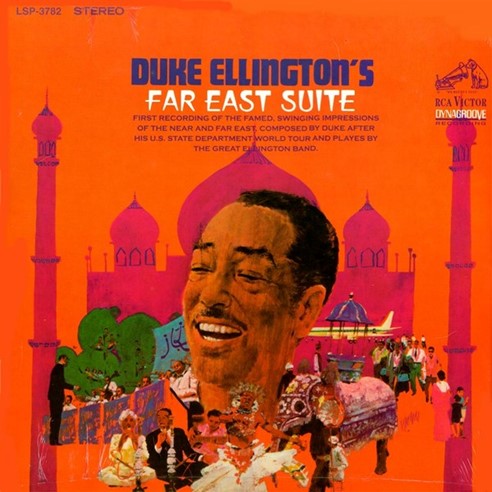 Duke Ellington
Duke Ellington
Far East Suite
Bluebird/RCA
Duke Ellington (p) and his orchestra. Rec. 1966
With Sony giving the RCA Victor catalogue the same treatment as the Columbia/ Legacy series, there could hardly be a better place to start than the Far East Suite (or indeed Mingus’s Tijuana Moods, see below). It’s music that can be seen as capitalising on the modal and world-music trends of 1960s jazz, which Ellington had already done much to foreshadow, but it manages to balance this aspect with archetypical sounds from the band and its soloists. The vehicles for Gonsalves, Hodges, Hamilton (‘Ad Lib on Nippon’), Carney (‘Agra’), Brown (‘Amad’) and the pianist himself are among the best they were ever offered, and they respond in kind. You could say this reviewer is too close to the Far East Suite for objectivity – heard much of it in concert before it was even recorded, transcribed all of it, frequently played it live and facilitated other live performances – but all that convinces me the album is one of the jewels of Ellington’s late period. Brian Priestley
Peter Brötzmann Octet
Machine Gun
FMP
Peter Brötzmann (ts, bar s), Evan Parker, Willem Breuker (ts), Fred Van Hove (p), Peter Kowald, Buschi Niebergall (b), Han Bennink and Sven Johansson (d). Rec. May 1968
To say Machine Gun is a heavy session would be somewhat more than understatement. Even now its untrammelled power and audacity are breathtaking and barely rivalled even by the most extreme ‘noise’ or rock. Barging shoulder-first through the door Coltrane had opened three years earlier with his ecstatic blow-out, Ascension, Brötzmann assembled an all-European octet including fellow improv pioneers Evan Parker, pianist Fred Van Hove and drummer Han Bennink, and laid down not only the first major European free jazz record but also the blueprint for all subsequent slash-and-burn skronk. Daniel Spicer
Archie Shepp
Four For Trane
Impulse!
Archie Shepp (ts, arr), Alan Shorter (flhn), Roswell Rudd (tb), John Tchicai (as), Reggie Workman (b) and Charles Moffett (d). Rec. 1964
Shepp was a member of Cecil Taylor’s 1960/1 unit that cut sides for Candid and Impulse!, but his first mature playing on disc is on the virtually unobtainable 1962 Archie Shepp - Bill Dixon Quartet album released on Savoy. Four For Trane demonstrates not only a shift in allegiance to Coltrane but a real gift for arrangement and a thoroughly original approach to his own playing at a time when everyone was copying Trane or Rollins. He may have got more radical later, but this was a 100 per cent proof shot of the new on its initial release. Keith Shadwick
Gil Evans
The Individualism of Gil Evans
Verve
Gil Evans (p, arr, comp) with, among others, Johnny Coles, Ernie Royal, Thad Jones, Bernie Glow (t), Frank Rehak, Jimmy Cleveland (tb), Julius Watkins, Bob Northern (Fr h), Bill Barber (tba), Steve Lacy (ss), Eric Dolphy (f, as, bcl), Wayne Shorter (ts), Garvin Bushell, Jerome Richardson (reeds), Kenny Burrell (g), Milt Hinton, Paul Chambers, Gary Peacock, Ron Carter (b) and Elvin Jones (d). Rec. 1963-4
A diffident self-promoter, Evans was only rarely coaxed into the recording studios to deliver albums that reflected fully his own musical visions away from the stars he wrapped in his sonic delights. This album is his most ambitious and deeply satisfying, covering his love of Kurt Weiil, the blues, Spanish music and swaggering self-penned pieces, all of them dripping in the translucent arrangements that make you feel you’ve entered a uniquely magical musical land the moment the orchestra makes a sound. Seamlessly featuring soloists like Wayne Shorter, Johnny Coles and Phil Woods, this album is pure musical alchemy from a total original. The CD is a happily expanded version of the original vinyl, adding 27 minutes of excellent previously unreleased new music. Keith Shadwick
John Handy
Live At Monterey Jazz Festival
Columbia
John Handy (as), Mike White (el vn), Jerry Hahn (g), Don Thompson (b) and Terry Clarke (d). Rec. 1965
This was Handy's breakthrough album. After slaving at the pit-face in New York, playing with Mingus then heading back to San Francisco in 1963, he built a local reputation that included headlining gigs at the Fillmore and which came to a head at the Monterey Jazz Festival in 1965. The tapes of the set were eventually released on Columbia and made an instant impression. Handy was of the moment and spent a few years in the sun internationally before it all went pear-shaped around 1968 and he lost his band, record deal and profile. Handy in those years had rare qualities that combined to make him unique and nothing has changed to deprive him of that uniqueness since. He has a beautiful tone, faultless technique, great expressive range and a very inquiring musical mind. In 1965 this led him to the sax-violin-guitar front line that made this band so special at the time and so prophetic of the jazz of later decades. He also had sufficient formal training to sustain large structures like the two pieces here from the festival, one 27 minutes long, the other just short of 20 minutes. These are not simply long, rambling improvisations by guys lining up in an orderly queue; they are properly thought-through performances of considerable sophistication. This is why they were such a hit at the time: they had drama and they told a gripping musical story. Keith Shadwick
Stan Tracey
Jazz Suite Inspired By Dylan Thomas’ Under Milk Wood
EMI/Columbia
Stan Tracey (p), Bobby Wellins (ts), Jeff Clyne (b) and Jackie Dougan (d). Rec. 8 May 1965
Stan Tracey’s timeless tour de force Jazz Suite – Inspired by Dylan Thomas’ Under Milk Wood is for many the pianist’s finest hour, and has often been described as one of the greatest British jazz albums ever made. Its release in September 1965, to a tremendous reception, helped steer British jazz towards a wider, more mainstream audience, its mix of rich lyricism and small hours ambience crackled like an unofficial soundtrack to 1960s London, and it still resonates as strongly today. It’s widely acknowledged that Tracey always played down his achievements, but Under Milk Wood is an album that refuses to be played down, a record that will resonate for another 50 years, and beyond. Mark Youll
Wayne Shorter
Speak No Evil
Blue Note
Wayne Shorter (ts), Freddie Hubbard (t), Herbie Hancock (p), Ron Carter (b) and Elvin Jones (d). Rec. 1964
In tandem with his contemporaneous contributions to Miles Davis’ 60s Quintet, Wayne Shorter’s sequence of albums for Blue Note produced the most satisfying music of his career, and threw up two or three bona fide classics of 1960s jazz. This quintet session is pre-eminent among them, capturing Shorter’s enigmatic compositional genius and highly original delivery on tenor saxophone (it predates his later predilection for soprano) in superb fashion. As on Out To Lunch, Freddie Hubbard works against the standard stereotype of his style to great effect, and the rhythm section of Herbie Hancock, Ron Carter and Elvin Jones is unimpeachable. Kenny Mathieson
Roland Kirk
Rip, Rig & Panic
Limelight
Roland Kirk (f, mzo, stritch, ts), Jaki Byard (p), Richard Davis (b) and Elvin Jones (d). Rec. 1965
Possibly Roland Kirk's best album, helped by a rhythm section to die for - Jaki Byard on piano, the great Richard Davis on bass and Elvin Jones on drums. This is a record that everyone should own. It’s unbelievably powerful and any lingering doubts about Kirk as an improviser dissipate over its seven tracks. The closing track ‘Mystical Dream’ features him on three horns, this time including oboe. Can you imagine the embouchure problems that would present? Rahsaan gives a history lesson and masterclass in jazz saxophone playing. Trane’s in there, Ben Webster, Don Byas, Bechet and Lester Young. A truly wonderful album.
Oscar Peterson Trio
Night Train
Verve
Oscar Peterson (p), Ray Brown b) and Ed Thigpen (d). Rec. 1962
Night Train has long been regarded as a high water mark in the pianist’s recording career. Recorded in 1962, it finds these three men at a pinnacle of mutual understanding and simulation, and Peterson at his most inspired when it comes to converting a disparate collection of material into a homogeneous and affectionate look back to a previous era. Keith Shadwick
Charles Lloyd Quartet
Dream Weaver
Atlantic
Charles Lloyd (ts, f), Keith Jarrett (p), Cecil McBee (b) and Jack DeJohnette (d). Rec. 1966
Voted "new star” by Downbeat in 1965, the emergence of the Charles Lloyd Quartet took jazz by storm in 1966, expanding musical horizons with a challenging eclectic amalgam of modal and free jazz with Eastern textures and Spanish soul. Dream Weaver also introduced Keith Jarrett and Jack DeJohnette to the world before Lloyd's subsequent LPs Forest Flower and Love-In became two of jazz’s biggest sellers. However, this was the album that first got tongues wagging, echoing the free spirit of the psychedelic 1960s and landing them an early slot at The Fillmore. Miles noticed too, quickly snatching Jarrett and DeJohnette for his own jazz/rock experiments that ushered in the dawn of a new era. Jon Newey
Oliver Nelson
The Blues And The Abstract Truth
Impulse!
Oliver Nelson (as, ts), Freddie Hubbard (t), Eric Dolphy (f, as, bcl), George Barrow (bar s), Bill Evans (p), Paul Chambers (b) and Roy Haynes (d). Rec. 1961
Perhaps, only with the passing of time is it possible to evaluate the true value of great works of art – in this instance, Oliver Nelson’s personal masterpiece 1960’s The Blues And The Abstract Truth. Along with Miles’ Kind Of Blue, Coltrane’s Giant Steps, Ornette’s Change Of The Century and Mingus Ah Um, Nelson’s The Blues And The Abstract Truth remains one of the truly indispensible albums of that era… and well beyond. While not quite so memorable as a stop-you-dead-in-your-tracks tenor sax titan, Nelson’s true gift was as a composer/arranger of extraordinary ability. Here, utilising just three solo horns – Hubbard, Dolphy and himself (George Barrow’s baritone was only employed in ensembles), Nelson created an abundance of uniquely rich textures on such diverse compositions as ‘Hoe Down’ , ‘Cascades’ and the title track which often gave the illusion of being performed by a far larger unit. Throughout, both Hubbard and Dolphy turn in virtuoso performances while surprisingly a somewhat subdued Bill Evans only occasionally makes his presence heard. Down in the engine room, Paul Chambers and Roy Haynes drive each performance with the utmost tact and discretion. Roy Carr
Anthony Braxton
For Alto
Delmark
Anthony Braxton (as). Rec. 1969
While the song titles - dedications to innovative musicians such as John Cage, Cecil Taylor and Leroy Jenkins - gave a clear indication of where the Association For The Advancement Of Creative Musicians iconoclast was coming from, few could have seen where, or rather how far, he was going on this landmark solo recital. Braxton’s alto saxophone is like the sound of acid dripped from the beating wings of hummingbirds, a charmingly corrosive caress. Through brilliant dynamics, lyricism, harmonic invention and pure sound trickery, Braxton showed a single horn could be a complete orchestra, paving the way for similar undertakings by Sonny Rollins among others years later. Kevin Le Gendre
Komeda Quintet
Astigmatic
Polskie - Nagrania Muza
Krzysztof Komeda (p), Tomasz Stanko (t), Zbigniew Namyslowski (as), Gunter Lenz (b) and Rune Carlson (d). Rec. 1965
Having formed the first modern jazz group in Poland, Komeda was to become the godfather of what we can now call European jazz. Besides his career as a film composer, he would go on to release just one studio album in his lifetime, but Astigmatic recorded in 1965 is commonly heralded as a ‘classic’ of jazz from Europe, a poetically progressive modernist recording that created a new Polish School of Jazz with its use of Slavic lyricism and elements of native classical and folk traditions. Selwyn Harris
John Mayer / Joe Harriott
Indo-Jazz Suite
EMI Columbia
Joe Harriott (as), Kenny Wheeler (t), Pat Smythe (p), Coleridge Goode (b), Allan Ganley (d), John Mayer (vn, harpsichord), Chris Taylor (f), Diwan Motihar (sitar), Chandrahas Paiganka (tambura) and Keshan Sathe (tabla). Rec. 1965
On Indo-Jazz Suite’s release in 1966 its four tracks – ‘Overture’, ‘Contrasts’, ‘Raga Megha’ and ‘Raga Gaud-Saranga’ – freeze-framed something in Indo-jazz fusion that was unique to Britain. The States may have had ‘happening’ notables like Don Ellis but never a John Mayer or a Joe Harriott. Mayer was a Calcutta-raised composer-violinist as equally at home in Hindustani classical and Indian vernacular forms as he was in Western classical and popular music forms. Kingston, Jamaica-born altoist Harriott was a jazzer who took the jazz path rather than the jazz-into-ska route. Ken Hunt
Jackie McLean
Let Freedom Ring
Blue Note
Jackie McLean (as), Walter Davis (p), Herbie Lewis (b) and Billy Higgins (d). Rec. 1962
Doubtless this is the first Blue Note album to reflect the 1960s avant garde. But it’s equally important to remember some of the portents in McLean’s own late-50s recordings, such as the Ornettish ‘Quadrangle’ from Jackie’s Bag or the modal blues of New Soil's 'Hip Strut’. Here, without any other front line instrument, he lets it all hang out in four long pieces, with the epic ‘Melody For Melonae’ lasting more than 13 minutes. Not possessing the fluency of Coltrane, the inspiration for such a piece, McLean mirrors Trane's intensity with bluesy intonations, high register screams and, at one point, a honk on the alto’s bottom note - not so easy or so often heard as on tenor. It’s true that incoherence beckons, as on the intriguing 'Omega’ which has Herbie Lewis in possibly unconscious imitation of Yusef Lateef's bassist Ernie Farrow playing a north African instrument. However, the drive and invention of Davis and especially Higgins keep the pressure on and in addition, the feelingful performance of a Bud Powell ballad, ‘I’ll Keep Loving You’, rounds off an unforgettable session. Brian Priestley
Charlie Haden
Liberation Music Orchestra
Impulse!
Charlie Haden (b), Don Cherry, Michael Mantler (t), Roswell Rudd (tb), Bob Northern (Fr hn), Howard Johnson (tba), Perry Robinson (cl), Gato Barbieri, Dewey Redman (ts), Sam Brown (g), Carla Bley (p, arr), Paul Motian and Andrew Cyrille (d). Rec. 1969
Jazz and politics have always been entwined, but rarely in the music’s history have the links spelt out on record. The 1960s was a decade when that orthodoxy was reversed, with Charlie Haden's debut album at the decade's end being one of the most explicit endorsements of leftist sentiments to be found in the entire jazz world. Sentiments of any persuasion are no proof of quality, but the compositions - from Haden, Bley and Ornette Coleman, among others - are uniformly strong and the supporting cast fiercely inspired. For 40 minutes you could believe, if you wanted to. Keith Shadwick
Jan Johansson
Jazz På Svenska
Megafon
Jan Johansson (p) and Georg Riedel (b). Rec. 1962-64
In the 1960s Jan Johansson recorded a series of jazz versions of Swedish folkloric material that were subsequently released as Jazz på Svenska (‘Jazz in Swedish). It would provide the inspiration for a significant area of Nordic jazz and to this day is the best selling jazz album in Sweden. Its release was timely. Since the end of the Second World War, Sweden had eagerly followed the American model of consumerism, from white goods to movies, from jazz to literature. The Vietnam war brought on an identity crisis – was Sweden an American state marching towards urban conformity or was it a proud nation in its own right? Jazz på Svenska fitted in with this new national mood, and is still played regularly on the radio today. It also defined Johansson, who was Stan Getz’s accompanist of choice when he lived in Sweden then Denmark, able to play in a forthright bop style favoured by the saxophonist. However, on Jazz på Svenska we hear a different Johansson where his melodic construction, space, intensity and an unhurried approach to improvisation would help shape a Nordic sensibility in jazz known as the Nordic Tone. Stuart Nicholson
Duke Ellington
...And His Mother Called Him Bill
Bluebird/RCA
Duke Ellington (p) and his orchestra. Rec. 1967
Only a fool can afford to ignore the commercial basis that underpins reality in the recorded music industry. But let's suspend such reality checks for a moment and indulge in a spot of jazz Utopianism. Why? Well, this is one of those records that would ideally be continually available for the world to wonder at, learn from and come to love.
It is always in the process of being deleted or reissued somewhere or other in the world, and the fact that it elicits a small but steady demand must be some consolation for the idealist buried inside us all. Ellington made a great many records in his long career, not all of them memorable or even hits. But this 1967 tribute to, and lament for, Billy Strayhorn is indisputably a latter-day peak. Charged with freshly felt grief - Strayhorn had died just three months prior to these sessions - and focused on some of his late musical partner’s greatest contributions to the Ellington book, this record builds up an intensity and character that represents all the best elements of Duke's orchestra in its final glory. Ellington was more than just an elegant, urbane figurehead: throughout his career he was a vital creative force in the music. Here's the proof. Keith Shadwick
Never miss an issue – subscribe to Jazzwise magazine today
